Subscribe or renew today
Every print subscription comes with full digital access

Science News

How a sugar acid crucial for life could have formed in interstellar clouds
Computer calculations and lab experiments have revealed a possible mechanism for the creation of glyceric acid, which has been seen in meteorites.

Protein whisperer Oluwatoyin Asojo fights neglected diseases

These are the chemicals that give teens pungent body odor

Sign Up For the Latest from Science News
Headlines and summaries of the latest Science News articles, delivered to your inbox
Thank you for signing up!
There was a problem signing you up.
More Stories in Chemistry

The smallest known molecular knot is made of just 54 atoms
Chemists are still trying to figure out why this combination of gold, phosphorus, oxygen and carbon atoms resulted in a molecular knot in the first place.

Here’s how tardigrades go into suspended animation
A new study offers more clues about the role of oxidation in signaling transitions between alive and mostly dead in tardigrades.

Capturing methane from the air would slow global warming. Can it be done?
Removing methane from the atmosphere requires different technology from removing carbon dioxide. Scientists are taking on the challenge.

‘Most Delicious Poison’ explores how toxins rule our world
In his debut book, Noah Whiteman tours through chemistry, evolution and world history to understand toxins and how we’ve come to use them.

Light, not just heat, might spur water to evaporate
In experiments, light shining on water as much as doubled the evaporation rate expected from heat alone, hinting at a never-before-seen effect.

Salty sweat helps one desert plant stay hydrated
The Athel tamarisk excretes excess salt through its leaves. The buildup of salt crystals pulls water directly from the air, a study reports.

The development of quantum dots wins the 2023 Nobel prize in chemistry
Moungi Bawendi, Louis Brus and Alexei Ekimov split the prize for their work in creating nanoparticles whose properties depend on their size.

50 years ago, the quest for superheavy elements was just getting started
In the 1970s, scientists were on the hunt for superheavy elements. They’ve since found more than a dozen and are searching for more.

Chemists turned plastic waste into tiny bars of soap
Researchers developed a process to turn plastic waste into surfactants, the key ingredients in dozens of products, including soap.
Subscribers, enter your e-mail address for full access to the Science News archives and digital editions.
Not a subscriber? Become one now .

- April 24, 2024 | Revolutionizing Renewable Energy: Innovative Salt Battery Efficiently Harvests Osmotic Power
- April 24, 2024 | 30 Times Clearer – Scientists Develop Improved Mid-Infrared Microscope
- April 24, 2024 | Shedding Pounds, Dodging Cancer: The Life-Saving Promise of Bariatric Surgery
- April 24, 2024 | Quantum Computing Meets Genomics: The Dawn of Hyper-Fast DNA Analysis
- April 24, 2024 | Scientists Turn to Venus in the Search for Alien Life
Chemistry News
SciTechDaily features the latest chemistry news and recent research articles from leading universities and institutes from around the world. Here, we delve into the ever-evolving realm of molecules, elements, and reactions, bringing you up-to-date insights from renowned scientists and researchers.
Read interesting chemistry news and breakthrough research on related topics like Biochemistry , Chemical Engineering , Materials Science , Nanoparticles , and Polymers .
Our comprehensive coverage spans the spectrum of chemistry, from organic and inorganic chemistry to biochemistry, analytical chemistry, and beyond. Stay informed about groundbreaking advancements, innovative techniques, and novel applications shaping the future of chemistry and its impact on our everyday lives. Discover, learn, and fuel your passion for chemistry with SciTechDaily.
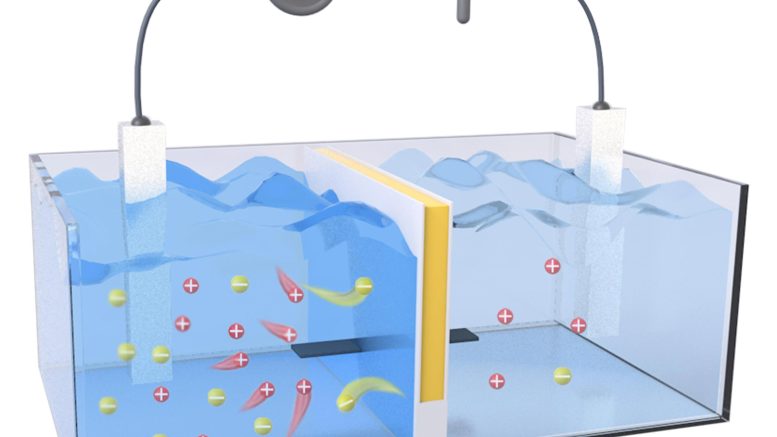
Chemistry April 24, 2024
Revolutionizing Renewable Energy: Innovative Salt Battery Efficiently Harvests Osmotic Power
A new semipermeable membrane doubles the osmotic energy output in estuaries, showing potential for sustainable power generation. Estuaries — where freshwater rivers meet the salty…
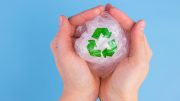
Revolutionizing Plastics: Safer, Greener LDPE Alternatives Unveiled
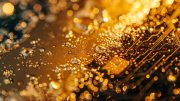
Extracting Pure Gold: Turning Electronic Waste Into Treasure
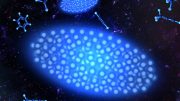
Unlocking the Secrets of Space Chemistry With Cold Coulomb Crystals
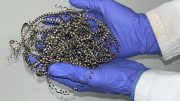
Trash To Treasure – Chemists Turn Metal Waste Into Hydrogen Catalyst

Organic Catalyst Discovery Could Reduce the Cost of Fuel Cells

“Neutronic Molecules” – Neutrons Meet Quantum Dots in Groundbreaking MIT Discovery

A Molecular Moonlander: PPh3’s Movement Challenges Conventional Science

Researchers Develop Simple Way To Harvest More “Blue Energy” From Waves
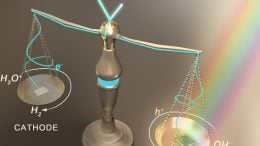
Chemistry April 11, 2024
Powering the Future: Unbiased PEC Cells Achieve Unprecedented Efficiency
Over the last decade, the photoelectrochemical (PEC) process for overall water-splitting (OWS) has seen comprehensive development, particularly in the areas of new catalysts, methods of…

Chemistry April 10, 2024
The Power of Waste: A New Innovative Approach To Improve the Energy Efficiency of Carbon Conversion
Scientists at McGill University have developed a novel method to enhance the energy efficiency of carbon conversion, utilizing waste material from pulp and paper production….

The Future of Solar Cells and More – Japanese Chemists Develop Glowing, Self-Healing Material
A research team at the RIKEN Center for Sustainable Resource Science (CSRS) has succeeded in developing a self-healing material that is also capable of emitting…
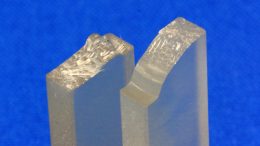
Chemistry April 9, 2024
Microbial Magic: Genetic Tweaks Unlock Superior Bioplastics
Engineered bacteria can produce a plastic modifier that makes renewably sourced plastic more processable, more fracture-resistant and highly biodegradable even in sea water. The Kobe…
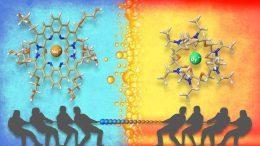
Revolutionizing Clean Energy: Transforming Rare Earth Element Extraction
Scientists have developed an innovative method to separate lanthanides, crucial for clean energy technologies, by combining substances that attract either lighter or heavier elements. This…

Chemistry April 7, 2024
Japanese Scientists Unveil Game-Changing Material for Magnesium Batteries
Scientists at Tohoku University have achieved a significant breakthrough in battery technology by creating a new cathode material for rechargeable magnesium batteries (RMBs). This material…
Decoding the Origin of Life: Scientists Solve Early Earth RNA Puzzle
Recent research illustrates how RNA molecules’ chemical characteristics might have played a crucial role in the development of complex life forms. How did complex life…

Chemistry April 6, 2024
From Chaos to Life: Unraveling Nature’s Ancient Molecular Kitchen
Life is complicated. What is true for our everyday existence also holds for the many complex processes that take place inside cells. Proteins are continuously…
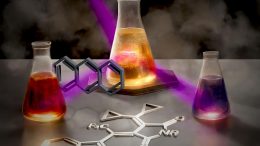
Chemistry April 4, 2024
Molecular Memory Breakthrough: Entering a New Era of Data Storage
Some molecules respond to external light pulses by changing their structure and holding certain states that can be switched from one to another. These are…
Chemistry News
Top headlines, latest headlines.
- Corks for Carbon-Neutral Ocean Cleanup
- Economical Rechargeable Batteries
- Organic Semiconductors
- New Materials Via the Ion-Exchange Method
- New Copper-Catalyzed C-H Activation Strategy
- Scientists Unravel Mystery of Gold's Glow
- Ion Valency On Metallopolymers
- From Metal Waste to Catalyst for Hydrogen
- Pigment Chemistry
- Green Wastewater-Treatment: Huge CO2 Cut
Earlier Headlines
Thursday, april 11, 2024.
- A New Spin on Organic Shampoo Makes It Sudsier, Longer Lasting
- Nanoscale Movies Shed Light on One Barrier to a Clean Energy Future
- Discovery Brings All-Solid-State Sodium Batteries Closer to Practical Use
Wednesday, April 10, 2024
- New Strategy for Assessing the Applicability of Reactions
- Revolutionary Molecular Device Unleashes Potential for Targeted Drug Delivery and Self-Healing Materials
Tuesday, April 9, 2024
- New Device Gathers, Stores Electricity in Remote Settings
- Subterranean Storage of Hydrogen
Monday, April 8, 2024
- Scientists Unveil Cutting-Edge Ruthenium Catalyst for New Reaction Discovery and Optimization
- Using Pulp and Paper Waste to Scrub Carbon from Emissions
- How Scientists Are Accelerating Chemistry Discoveries With Automation
Friday, April 5, 2024
- A Simple, Inexpensive Way to Make Carbon Atoms Bind Together
- Chemical Reactions Can Scramble Quantum Information as Well as Black Holes
- Rapid, Simultaneous Detection of Multiple Bacteria Achieved With Handheld Sensor
Wednesday, April 3, 2024
- 'Tug of War' Tactic Enhances Chemical Separations for Critical Materials
- Developing a Vaccine for the 'zombie Drug' Xylazine
- Unleashing Disordered Rocksalt Oxides as Cathodes for Rechargeable Magnesium Batteries
- Plastic-Free Vegan Leather That Dyes Itself Grown from Bacteria
- Water-Based Paints: Less Stinky, but Some Still Contain Potentially Hazardous Chemicals
Tuesday, April 2, 2024
- Chemistry Researchers Modify Solar Technology to Produce a Less Harmful Greenhouse Gas
Monday, April 1, 2024
- Engineers 'symphonize' Cleaner Ammonia Production
- Physics-Based Predictive Tool Will Speed Up Battery and Superconductor Research
Thursday, March 28, 2024
- New Approach to Monitoring Freshwater Quality Can Identify Sources of Pollution, and Predict Their Effects
- Study Unlocks the Power of Visible Light for Sustainable Chemistry
- Revolutionary Biomimetic Olfactory Chips to Enable Advanced Gas Sensing and Odor Detection
Wednesday, March 27, 2024
- More Efficient TVs, Screens and Lighting
- A Solar Cell You Can Bend and Soak in Water
Tuesday, March 26, 2024
- Micro-Lisa! Making a Mark With Novel Nano-Scale Laser Writing
Monday, March 25, 2024
- Research Lights Up Process for Turning CO2 Into Sustainable Fuel
- Pairing Crypto Mining With Green Hydrogen Offers Clean Energy Boost
- Pushing Back the Limits of Optical Imaging by Processing Trillions of Frames Per Second
- Scientists Deliver Quantum Algorithm to Develop New Materials and Chemistry
- The World Is One Step Closer to Secure Quantum Communication on a Global Scale
- A Self-Cleaning Wall Paint
- New All-Liquid Iron Flow Battery for Grid Energy Storage
- Major Environmental Benefits Recycling Gold With Biodiesel
- New Reactor Could Save Millions When Making Ingredients for Plastics and Rubber from Natural Gas
- New Route to Recyclable Polymers from Plants
Friday, March 22, 2024
- A Reliable and Efficient Computational Method for Finding Transition States in Chemical Reactions
Thursday, March 21, 2024
- Say Hello to Biodegradable Microplastics
Wednesday, March 20, 2024
- Cleaning Up Environmental Contaminants With Quantum Dot Technology
- Recyclable Reagent and Sunlight Convert Carbon Monoxide Into Methanol
- Crawfish Could Transfer Ionic Lithium from Their Environment Into Food Chain
Tuesday, March 19, 2024
- Toxic Metal Particles Can Be Present in Cannabis Vapes Even Before the First Use, Study Finds
- Molecular Crystal Motors Move Like Microbes When Exposed to Light
- Spectroscopy and Theory Shed Light on Excitons in Semiconductors
- Sustainable Solution for Wastewater Polluted by Dyes Used in Many Industries
Monday, March 18, 2024
- Harnessing Hydrogen at Life's Origin
- Using Light to Produce Medication and Plastics More Efficiently
- Sustainable Plastics from Agricultural Waste
- Fast-Charging Lithium-Sulphur Batteries on the Horizon
Friday, March 15, 2024
- Breakthrough in Ultraviolet Spectroscopy
- Printed Polymer Allows Researchers to Explore Chirality and Spin Interactions at Room Temperature
- Revolutionary Method Developed for Mass-Producing Polymer Solid Electrolytes
Thursday, March 14, 2024
- A New World of 2D Material Is Opening Up
Wednesday, March 13, 2024
- Revolutionary Chronic Wound Treatment Could Help Millions
- Molecular Simulations of Ammonia Mixtures Support Search for Renewable Fuels
- New High-Performance Solar Cell Material
Tuesday, March 12, 2024
- A Simple and Robust Experimental Process for Protein Engineering
- Batteries for Airborne Electric Vehicles That Take Off and Land Vertically
- Spiral Wrappers Switch Nanotubes from Conductors to Semiconductors and Back
Monday, March 11, 2024
- Cicadas' Unique Urination Unlocks New Understanding of Fluid Dynamics
- Design Rules and Synthesis of Quantum Memory Candidates
- Combined Microscopy Technique Catches Light-Driven Polymers in the Act
Friday, March 8, 2024
- How Surface Roughness Influences the Adhesion of Soft Materials
- Tiny Wireless Light Bulbs for Biomedical Applications
- Researchers Develop Artificial Building Blocks of Life
- A Better Handle on the Emissions Budget for the Paris Climate Targets
- Balancing Training Data and Human Knowledge Makes AI Act More Like a Scientist
Thursday, March 7, 2024
- Pinging Pipes Could Help to Identify Lead Water Lines Without Excavation
- Researchers Develop New Machine Learning Method for Modeling of Chemical Reactions
Wednesday, March 6, 2024
- Viscose Manufactured Solely from Recycled Materials
- Breakthrough Research Enables High-Density Hydrogen Storage for Future Energy Systems
Tuesday, March 5, 2024
- Key Advance Toward Removing Common Herbicide from Groundwater
- Aluminum Nanoparticles Make Tunable Green Catalysts
- Harmful 'forever Chemicals' Removed from Water With New Electrocatalysis Method
- Using Light to Precisely Control Single-Molecule Devices
- A New Theoretical Development Clarifies Water's Electronic Structure
Saturday, March 2, 2024
- Evolution-Capable AI Promotes Green Hydrogen Production Using More Abundant Chemical Elements
Friday, March 1, 2024
- Researchers Create Coating Solution for Safer Food Storage
- AI-Enabled Atomic Robotic Probe to Advance Quantum Material Manufacturing
- It's Not Only Opposites That Attract -- New Study Shows Like-Charged Particles Can Come Together
Thursday, February 29, 2024
- Better Neutron Mirrors Can Reveal the Inner Secrets of Matter
- Researchers Improve the Stability of Perovskite Solar Cells
- A Bright Idea for Recycling Rare-Earth Phosphors from Used Fluorescent Bulbs
Wednesday, February 28, 2024
- How Molecular 'handedness' Emerged in Early Biology
- Researchers Develop Novel Method to Photosynthesize Hydrogen Peroxide Using Water and Air
- Light Stimulates a New Twist for Synthetic Chemistry
Tuesday, February 27, 2024
- New Disease Testing Component Facilitates Lower-Cost Diagnostics
- Imaging Grain Boundaries That Impede Lithium-Ion Migration in Solid-State Batteries
- AI-Driven Lab Speeds Catalysis Research
- Low-Temperature Plasma Used to Remove E. Coli from Hydroponically Grown Crops
Monday, February 26, 2024
- Black Carbon Sensor Could Fill Massive Monitoring Gaps
- The Mutual Neutralization of Hydronium and Hydroxide
Friday, February 23, 2024
- UBC Okanagan Researchers Look to the Past to Improve Construction Sustainability
- Using Mussels and Silkworm Cocoons to Stop Organ Bleeding
Thursday, February 22, 2024
- Chemists Synthesize Unique Anticancer Molecules Using Novel Approach
- A New Vibrant Blue Pottery Pigment With Less Cobalt
- Graphene Research: Numerous Products, No Acute Dangers Found by Study
Wednesday, February 21, 2024
- An Environmentally Friendly Way to Turn Seafood Waste Into Value-Added Products
- Revolutionary Breakthrough in Solar Energy: Most Efficient QD Solar Cells
- LATEST NEWS
- Top Science
- Top Physical/Tech
- Top Environment
- Top Society/Education
- Health & Medicine
- Mind & Brain
- Living Well
- Space & Time
- Matter & Energy
- Business & Industry
- Automotive and Transportation
- Consumer Electronics
- Energy and Resources
- Engineering and Construction
- Telecommunications
- Textiles and Clothing
- Biochemistry
- Inorganic Chemistry
- Organic Chemistry
- Thermodynamics
- Electricity
- Energy Technology
- Alternative Fuels
- Energy Policy
- Fossil Fuels
- Nuclear Energy
- Solar Energy
- Wind Energy
- Engineering
- 3-D Printing
- Civil Engineering
- Construction
- Electronics
- Forensic Research
- Materials Science
- Medical Technology
- Microarrays
- Nanotechnology
- Robotics Research
- Spintronics
- Sports Science
- Transportation Science
- Virtual Environment
- Weapons Technology
- Wearable Technology
- Albert Einstein
- Nature of Water
- Quantum Computing
- Quantum Physics
- Computers & Math
- Plants & Animals
- Earth & Climate
- Fossils & Ruins
- Science & Society
- Education & Learning
Strange & Offbeat
- Fossil Frogs Share Their Skincare Secrets
- Fussy Eater? Most Parents Play Short Order Cook
- Precise Time Measurement: Superradiant Atoms
- Artificial Cells That Act Like Living Cells
- Affordable and Targeted Anticancer Agent
- This Alloy Is Kinky
- Giant Galactic Explosion: Galaxy Pollution
- Flare Erupting Around a Black Hole
- Two Species Interbreeding Created New Butterfly
- Warming Antarctic Deep-Sea and Sea Level Rise
Trending Topics
Subscribe to Scientific American!
Latest Chemistry Stories

Bouncing Bubbles Boost Boiling
A new surface uses tiny gaps to supercharge bubble formation to transfer heat

Making Chemistry Safer Is Worth the Price Tag
With chemical spills and other accidents a common occurrence, it’s becoming more expensive to maintain the status quo than to make chemistry safer
From Stupor to Sober with One (Hormone) Shot
Injection of a hormone called FGF21 rapidly revives intoxicated mice.

Hair Relaxers Will Be Safer without Formaldehyde, but It’s Just a Start
Banning formaldehyde hair relaxers might help protect Black women’s health, but won’t end the racism that drives their use
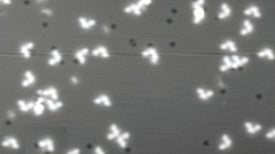
This Molecule Is a Nanoscale Bulldozer
Researchers discovered that a heart-shaped molecule will jump in straight lines when given an electric jolt
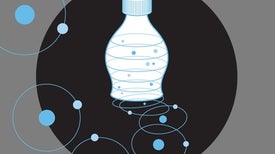
Zapping Plastic Waste Can Produce Clean Fuel
Can waste plastic can be converted into hydrogen gas and a type of graphene—at a profit?

Gluten’s Complex Chemistry Contributes to Delicious Baked Goods
Gluten’s unique chemistry gives foods like bread and rolls their airy, stretchy textures

Superconductor Research Is in a ‘Golden Age,’ Despite Controversy
The search for room-temperature superconductors has suffered scandalous setbacks, but physicists are optimistic about the field’s future

Hair Straighteners and Relaxers May Be Harmful to Health. Here’s How to Make Them Better
Growing evidence suggests certain hair products marketed toward Black women may be harmful to their health. Scientists, entrepreneurs and policy makers are taking steps to fix the problem...

Nature Retracts Controversial Room-Temperature Superconductor Study
One of the world’s most prestigious science journals has retracted a major paper from embattled superconductivity researcher Ranga Dias
Support science journalism.

Thanks for reading Scientific American. Knowledge awaits.
Already a subscriber? Sign in.
Thanks for reading Scientific American. Create your free account or Sign in to continue.
See Subscription Options
Continue reading with a Scientific American subscription.
You may cancel at any time.
Articles on Chemistry
Displaying 1 - 20 of 348 articles.
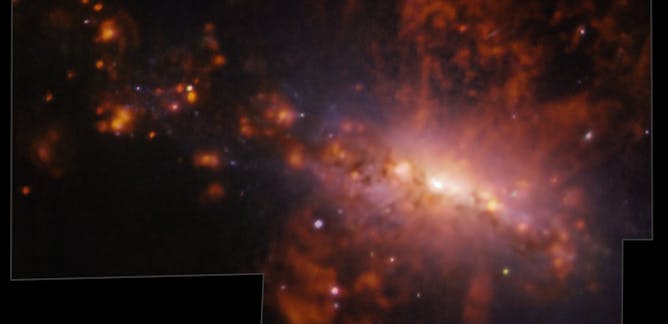
We mapped a massive explosion in space, showing how galaxies ‘pollute’ the cosmos
Adam B. Watts , The University of Western Australia
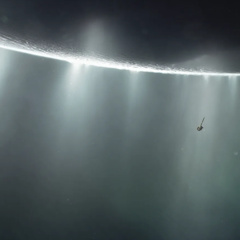
Saturn’s ocean moon Enceladus is able to support life − my research team is working out how to detect extraterrestrial cells there
Fabian Klenner , University of Washington

A young Black scientist discovered a pivotal leprosy treatment in the 1920s − but an older colleague took the credit
Mark M. Lambert , Des Moines University

What’s in tattoo ink? My team’s chemical analysis found ingredients that aren’t on the label and could cause allergies
John Swierk , Binghamton University, State University of New York

What washing machine settings can I use to make my clothes last longer?
Alessandra Sutti , Deakin University ; Amol Patil , Deakin University , and Maryam Naebe , Deakin University

Vinegar and baking soda: a cleaning hack or just a bunch of fizz?
Nathan Kilah , University of Tasmania

Lithium-ion batteries don’t work well in the cold − a battery researcher explains the chemistry at low temperatures
Wesley Chang , Drexel University

Fire is a chemical reaction. Here’s why Australia is supremely suited to it
Jason Dutton , La Trobe University

Run out of butter or eggs? Here’s the science behind substitute ingredients
Paulomi (Polly) Burey , University of Southern Queensland

Your unique smell can provide clues about how healthy you are
Aoife Morrin , Dublin City University

What is micellar water and how does it work?
Daniel Eldridge , Swinburne University of Technology
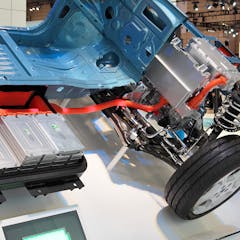
Self-extinguishing batteries could reduce the risk of deadly and costly battery fires
Apparao Rao , Clemson University and Bingan Lu , Hunan University

Studying lake deposits in Idaho could give scientists insight into ancient traces of life on Mars
Robert Patalano , Bryant University

Animals keep eating precious plants – we used ‘smell misinformation’ to keep them away
Patrick Finnerty , University of Sydney ; Clare McArthur , University of Sydney , and Peter Banks , University of Sydney
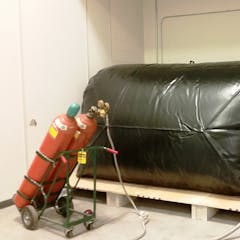
Helium is an essential material for research and medical equipment, but it’s nonrenewable and difficult to recycle
Nicholas Fitzkee , Mississippi State University

Your fingerprint is actually 3D − research into holograms could improve forensic fingerprint analysis
Partha Banerjee , University of Dayton
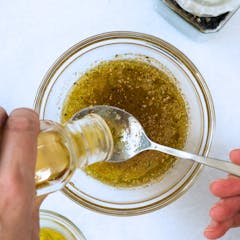
The science of the ideal salad dressing

How to make gravy (using chemistry)

How active are the microorganisms in your yogurt? We created a new tool to study probiotic activity — and made it out of cardboard
Carlos D. Garcia , Clemson University and George Chumanov , Clemson University

Earth may have had all the elements needed for life within it all along − contrary to theories that these elements came from meteorites
Shichun Huang , University of Tennessee and Wenzhong Wang , University of Science and Technology of China
Related Topics
- Biochemistry
- Food science
- Materials science
- Nanotechnology
- Nobel Prize
- Periodic table
Top contributors
Professor of Science Communication and Chemistry, University of Hull
Senior Lecturer in Chemistry, University of Birmingham
Senior Lecturer in Chemistry, University of Tasmania
Associate Professor of Chemistry, University of Richmond
Postdoctoral research associate, University of Oxford
Lead for Evidence-Based Medicine and Nutrition, Aston Medical School, Aston University
Assistant Professor of Chemistry, Austin College
Professor in Food Science and Human Nutrition, University of Canberra
Associate professor, Monash University
Professor, The University of Queensland
CBRN defence scientist, Charles Darwin University
Materials Chemist and Science Communicator, University of Sheffield
Assistant Professor of Chemistry, Dartmouth College
PhD Candidate, University of Nottingham
- X (Twitter)
- Unfollow topic Follow topic
Advertisement
Environment
The incredible new tech that can recycle all plastics, forever.
Subscriber-only
Drug residue can be detected in fingerprints left at crime scenes
Life’s vital chemistry may have begun in hot, cracked rock, flavour-predicting ai can tell brewers how to make beer taste better, ai could help replicate smells in danger of being lost to history, we now know what makes oranges taste of oranges, magnetic particles turn water droplets into tightrope-walking acrobats, casimir funk: the scientist who gave us the word 'vitamin', crucial chemical for life can form in conditions found on early earth, super-thickeners made from starch reduce calories and carbs in food, inside the brooklyn start-up making clean jet fuel with captured co2, record broken for the coldest temperature reached by large molecules, layer of graphene could help protect statues and paintings from damage, the chemist who told us to put salt in our tea explains why she did it.
This website uses cookies to improve your user experience. By continuing to use the site, you are accepting our use of cookies. Read the ACS privacy policy.
- ACS Publications
Discover the Most-Read Chemistry Articles of 2021
- Jan 20, 2022
- 22 min read

There are lots of different ways to look at the reach of an article. You can look at citations, Altmetric Attention Scores, awards, and more. One way to consider the influence of an article is just by looking at how many people chose to read it. To that end, we’ve compiled lists of the five most-read chemistry articles that were published in each ACS Publications journal during 2021, including papers, reviews, perspectives, and editorial pieces. These lists were not chosen by the journals’ editors and should not be taken as a “best of” list, but as another perspective on what newly published research attracted the most attention in a particular month.
Click on your favorite journal below to see their most-read articles that were published in all of 2021.
Sign up to get this list in your inbox every month.
Accounts of chemical research, accounts of materials research, acs agricultural science & technology, acs applied bio materials, acs applied electronic materials, acs applied energy materials, acs applied materials & interfaces, acs applied nano materials, acs applied polymer materials, acs bio & med chem au, acs biomaterials science & engineering, acs catalysis, acs central science, acs chemical biology, acs chemical health & safety, acs chemical neuroscience.
*** Persistent Brainstem Dysfunction in Long-COVID: A Hypothesis DOI: 10.1021/acschemneuro.0c00793
Interactions between SARS-CoV-2 N-Protein and -Synuclein Accelerate Amyloid Formation DOI: 10.1021/acschemneuro.1c00666
Genetic Probe for Visualizing Glutamatergic Synapses and Vesicles by 3D Electron Microscopy DOI: 10.1021/acschemneuro.0c00643
Mechanism of Anosmia Caused by Symptoms of COVID-19 and Emerging Treatments DOI: 10.1021/acschemneuro.1c00477
In Vitro and In Vivo Investigation of S1PR1 Expression in the Central Nervous System Using [3H]CS1P1 and [11C]CS1P1 DOI: 10.1021/acschemneuro.1c00492 [/expand]
ACS Earth and Space Chemistry *** Purification of Disc-Shaped Diatoms from the Southern Ocean Sediment by a Cell Sorter to Obtain an Accurate Oxygen Isotope Record DOI: 10.1021/acsearthspacechem.1c00201
Sensitive Drone Mapping of Methane Emissions without the Need for Supplementary Ground-Based Measurements DOI: 10.1021/acsearthspacechem.1c00106
Purification of Disc-Shaped Diatoms from the Southern Ocean Sediment by a Cell Sorter to Obtain an Accurate Oxygen Isotope Record DOI: 10.1021/acsearthspacechem.1c00201
Aging of Atmospheric Brown Carbon Aerosol DOI: 10.1021/acsearthspacechem.0c00346
Estimation of Skin and Ocular Damage Avoided in the United States through Implementation of the Montreal Protocol on Substances that Deplete the Ozone Layer DOI: 10.1021/acsearthspacechem.1c00183
ACS Energy Letters *** Opportunities and Challenges of Lithium Ion Batteries in Automotive Applications DOI: 10.1021/acsenergylett.0c02584
Five Key Attributes of an Effective Title DOI: 10.1021/acsenergylett.1c00755
Is There Anything Better than Pt for HER? DOI: 10.1021/acsenergylett.1c00246
Enhanced Performance and Stability of 3D/2D Tin Perovskite Solar Cells Fabricated with a Sequential Solution Deposition DOI: 10.1021/acsenergylett.0c02305
Challenges for and Pathways toward Li-Metal-Based All-Solid-State Batteries DOI: 10.1021/acsenergylett.1c00445
ACS Engineering Au *** Postcombustion CO2 Capture: A Comparative Techno-Economic Assessment of Three Technologies Using a Solvent, an Adsorbent, and a Membrane DOI: 10.1021/acsengineeringau.1c00002
Durable Polylactic Acid (PLA)-Based Sustainable Engineered Blends and Biocomposites: Recent Developments, Challenges, and Opportunities DOI: 10.1021/acsengineeringau.1c00011
Postcombustion CO2 Capture: A Comparative Techno-Economic Assessment of Three Technologies Using a Solvent, an Adsorbent, and a Membrane DOI: 10.1021/acsengineeringau.1c00002
Modeling Growth Kinetics of Methane Hydrate in Stirred Tank Batch Reactors DOI: 10.1021/acsengineeringau.1c00012
Funding Mandates and the Launch of Nine Fully Open Access ACS Au Journals DOI: 10.1021/acsengineeringau.1c00001
ACS Environmental Au *** Measurements and Simulations of Aerosol Released while Singing and Playing Wind Instruments DOI: 10.1021/acsenvironau.1c00007
The Human Impact on All Soil-Forming Factors during the Anthropocene DOI: 10.1021/acsenvironau.1c00010
Impacts of COVID-19 Outbreak on the Municipal Solid Waste Management: Now and beyond the Pandemic DOI: 10.1021/acsenvironau.1c00005
Microplastics through the Lens of Colloid Science DOI: 10.1021/acsenvironau.1c00016
Wastewater-Based Epidemiology for Community Monitoring of SARS-CoV-2: Progress and Challenges DOI: 10.1021/acsenvironau.1c00015
ACS Environmental Science & Technology Water *** Methodological Advances to Study Contaminant Biotransformation: New Prospects for Understanding and Reducing Environmental Persistence? DOI: 10.1021/acsestwater.1c00025
Electrochemical Biosensors for Detection of Pesticides and Heavy Metal Toxicants in Water: Recent Trends and Progress DOI: 10.1021/acsestwater.0c00125
Welcome to ACS ES&T Water: Vision and Inspiration DOI: 10.1021/acsestwater.0c00298
The Price of Really Clean Water: Combining Nanofiltration with Granular Activated Carbon and Anion Exchange Resins for the Removal of Per- And Polyfluoralkyl Substances (PFASs) in Drinking Water Production DOI: 10.1021/acsestwater.0c00141
Urban Stormwater Runoff: A Major Pathway for Anthropogenic Particles, Black Rubbery Fragments, and Other Types of Microplastics to Urban Receiving Waters DOI: 10.1021/acsestwater.1c00017
ACS ES&T Engineering *** Effect of Process Variables on Food Waste Valorization via Hydrothermal Liquefaction DOI: 10.1021/acsestengg.0c00115
Electrified Membranes for Water Treatment Applications DOI: 10.1021/acsestengg.1c00015
Screening and Optimization of Microalgae Biomass and Plastic Material Coprocessing by Hydrothermal Liquefaction DOI: 10.1021/acsestengg.1c00261
Dynamically Controlled Environment Agriculture: Integrating Machine Learning and Mechanistic and Physiological Models for Sustainable Food Cultivation DOI: 10.1021/acsestengg.1c00269
Nano-enhanced Bioremediation for Oil Spills: A Review DOI: 10.1021/acsestengg.0c00217
ACS Food Science & Technology *** Sterol Ferulate Rich Wheat Bran Oil Concentrate Prevents Liver Damage in MAFLD Mouse Model by Modulating FAS and PCSK9 DOI: 10.1021/acsfoodscitech.0c00156
Isolation and Gelling Properties of Duckweed Protein Concentrate DOI: 10.1021/acsfoodscitech.1c00009
Production of Endotoxin-Free Microbial Biomass for Food Applications by Gas Fermentation of Gram-Positive H2-Oxidizing Bacteria DOI: 10.1021/acsfoodscitech.0c00129
Recent Advances in Intelligent Food Packaging Applications Using Natural Food Colorants DOI: 10.1021/acsfoodscitech.0c00039
Diospyros digyna (black sapote), an Undervalued Fruit: A Review DOI: 10.1021/acsfoodscitech.0c00103
ACS Infectious Diseases *** Proteolytic Activation of SARS-CoV-2 Spike at the S1/S2 Boundary: Potential Role of Proteases beyond Furin DOI: 10.1021/acsinfecdis.0c00701
Whole Cell Active Inhibitors of Mycobacterial Lipoamide Dehydrogenase Afford Selectivity over the Human Enzyme through Tight Binding Interactions DOI: 10.1021/acsinfecdis.0c00788
Antibody Affinity Governs the Inhibition of SARS-CoV-2 Spike/ACE2 Binding in Patient Serum DOI: 10.1021/acsinfecdis.1c00047
The CARB-X Portfolio of Nontraditional Antibacterial Products DOI: 10.1021/acsinfecdis.1c00331
In Vivo Activity of Repurposed Amodiaquine as a Host-Targeting Therapy for the Treatment of Anthrax DOI: 10.1021/acsinfecdis.1c00190
ACS Macro Letters *** Synthesis and Characterization of Redox-Responsive Disulfide Cross-Linked Polymer Particles for Energy Storage Applications DOI: 10.1021/acsmacrolett.1c00682
Entrepreneurship in Polymer Chemistry DOI: 10.1021/acsmacrolett.1c00303
Three-Dimensional Printable Gelatin Hydrogels Incorporating Graphene Oxide to Enable Spontaneous Myogenic Differentiation DOI: 10.1021/acsmacrolett.1c00563
Light-Enabled Reversible Shape Transformation of Block Copolymer Particles DOI: 10.1021/acsmacrolett.1c00356
Closed-Loop Recycling of Both Resin and Fiber from High-Performance Thermoset Epoxy/Carbon Fiber Composites DOI: 10.1021/acsmacrolett.1c00437
ACS Materials Au *** Transition Metal Chalcogenides as a Versatile and Tunable Platform for Catalytic CO2 and N2 Electroreduction DOI: 10.1021/acsmaterialsau.1c00006
Transition Metal Chalcogenides as a Versatile and Tunable Platform for Catalytic CO2 and N2 Electroreduction Open Access DOI: 10.1021/acsmaterialsau.1c00006
Structure–Processing–Property Relationships of 3D Printed Porous Polymeric Materials DOI: 10.1021/acsmaterialsau.1c00017
Roles of Graphene Oxide in Heterogeneous Photocatalysis DOI: 10.1021/acsmaterialsau.1c00022
(NH4)2AgX3 (X = Br, I): 1D Silver Halides with Broadband White Light Emission and Improved Stability DOI: 10.1021/acsmaterialsau.1c00009
ACS Materials Letters *** Two-Dimensional Materials for Perovskite Solar Cells with Enhanced Efficiency and Stability DOI: 10.1021/acsmaterialslett.1c00327
Principles of Molecular Machines at the Single-Molecule Scale DOI: 10.1021/acsmaterialslett.1c00366
CsMnBr3: Lead-Free Nanocrystals with High Photoluminescence Quantum Yield and Picosecond Radiative Lifetime DOI: 10.1021/acsmaterialslett.1c00663
Mechanochemical Synthesis and Structure of Lithium Tetrahaloaluminates, LiAlX4 (X = Cl, Br, I): A Family of Li-Ion Conducting Ternary Halides DOI: 10.1021/acsmaterialslett.1c00055
Perspective on High-Rate Alkaline Water Splitting DOI: 10.1021/acsmaterialslett.0c00536
ACS Measurement Science Au *** A Workflow to Perform Targeted Metabolomics at the Untargeted Scale on a Triple Quadrupole Mass Spectrometer DOI: 10.1021/acsmeasuresciau.1c00007
In Situ X-ray Absorption Spectroscopy and Droplet-Based Microfluidics: An Analysis of Calcium Carbonate Precipitation DOI: 10.1021/acsmeasuresciau.1c00005
Artificial Synapse: Spatiotemporal Heterogeneities in Dopamine Electrochemistry at a Carbon Fiber Ultramicroelectrode DOI: 10.1021/acsmeasuresciau.1c00006
Novel, User-Friendly Experimental and Analysis Strategies for Fast Voltammetry: 1. The Analysis Kid for FSCV DOI: 10.1021/acsmeasuresciau.1c00003
Dual “Static and Dynamic” Fluorescence Quenching Mechanisms Based Detection of TNT via a Cationic Conjugated Polymer DOI: 10.1021/acsmeasuresciau.1c00023
ACS Medicinal Chemistry Letters *** Molecular Biology Clues Portray SARS-CoV-2 as a Gain-of-Function Laboratory Manipulation of Bat CoV RaTG13 DOI: 10.1021/acsmedchemlett.1c00274
Redefining the Histone Deacetylase Inhibitor Pharmacophore: High Potency with No Zinc Cofactor Interaction DOI: 10.1021/acsmedchemlett.1c00074
Structure-Based Discovery of Proline-Derived Arginase Inhibitors with Improved Oral Bioavailability for Immuno-Oncology DOI: 10.1021/acsmedchemlett.1c00195
Targeting the KRAS G12D Mutant as Potential Therapy in Cancer DOI: 10.1021/acsmedchemlett.1c00390
Computer Prediction of pKa Values in Small Molecules and Proteins DOI: 10.1021/acsmedchemlett.1c00435
ACS Nano *** State of the Art and Prospects for Halide Perovskite Nanocrystals DOI: 10.1021/acsnano.0c08903
Lipid Nanoparticles—From Liposomes to mRNA Vaccine Delivery, a Landscape of Research Diversity and Advancement DOI: 10.1021/acsnano.1c04996
X-ray-Based Techniques to Study the Nano–Bio Interface DOI: 10.1021/acsnano.0c09563
Applications of Few-Layer Nb2C MXene: Narrow-Band Photodetectors and Femtosecond Mode-Locked Fiber Lasers DOI: 10.1021/acsnano.0c07608
Cell to Cell Signaling through Light in Artificial Cell Communities: Glowing Predator Lures Prey DOI: 10.1021/acsnano.1c01600
ACS Nanoscience Au *** Luciferase-Based Biosensors in the Era of the COVID-19 Pandemic DOI: 10.1021/acsnanoscienceau.1c00009
Ligand Ratio Plays a Critical Role in the Design of Optimal Multifunctional Gold Nanoclusters for Targeted Gastric Cancer Therapy DOI: 10.1021/acsnanoscienceau.1c00008
Funding Mandates and the Launch of Nine Fully Open Access ACS Au Journals DOI: 10.1021/acsnanoscienceau.1c00004
Topogami: Topologically Linked DNA Origami DOI: 10.1021/acsnanoscienceau.1c00027
Design of Over-1000 nm Near-Infrared Fluorescent Polymeric Micellar Nanoparticles by Matching the Solubility Parameter of the Core Polymer and Dye DOI: 10.1021/acsnanoscienceau.1c00010
ACS Omega *** Identification of a New Family of Prenylated Volatile Sulfur Compounds in Cannabis Revealed by Comprehensive Two-Dimensional Gas Chromatography DOI: 10.1021/acsomega.1c04196
Toward a Large-Scale Synthesis of Molnupiravir (MK-4482, EIDD-2801) from Cytidine DOI: 10.1021/acsomega.1c00772
Preanalytical Issues and Cycle Threshold Values in SARS-CoV-2 Real-Time RT-PCR Testing: Should Test Results Include These? DOI: 10.1021/acsomega.1c00166
How Many CO2 Bubbles in a Glass of Beer? DOI: 10.1021/acsomega.1c00256
Tuning the Oxygen Content of Reduced Graphene Oxide and Effects on Its Properties DOI: 10.1021/acsomega.0c05578
ACS Organic & Inorganic Au *** Synthesis and Physicochemical Properties of 2-SF5-(Aza)Indoles, a New Family of SF5 Heterocycles DOI: 10.1021/acsorginorgau.1c00010
Electrochemical TEMPO-Catalyzed Oxidative Ugi-Type Reaction DOI: 10.1021/acsorginorgau.1c00003
Enabling Cyclization Strategies through Carbonyl-Ylide-Mediated Synthesis of Malonate Enol Ethers DOI: 10.1021/acsorginorgau.1c00006
Visible-Light-Driven C–S Bond Formation Based on Electron Donor–Acceptor Excitation and Hydrogen Atom Transfer Combined System DOI: 10.1021/acsorginorgau.1c00007
Turn-On Fluorescent Probe Based on a Dansyl Triarginine Peptide for Ganglioside Imaging DOI: 10.1021/acsorginorgau.1c00013
ACS Pharmacology & Translational Science *** Inhibition of Severe Acute Respiratory Syndrome Coronavirus 2 Replication by Hypertonic Saline Solution in Lung and Kidney Epithelial Cells DOI: 10.1021/acsptsci.1c00080
Discovery of TMPRSS2 Inhibitors from Virtual Screening as a Potential Treatment of COVID-19 DOI: 10.1021/acsptsci.0c00221
Ethical Concerns about Psilocybin Intellectual Property DOI: 10.1021/acsptsci.0c00171
Predicting Reactions to Psychedelic Drugs: A Systematic Review of States and Traits Related to Acute Drug Effects DOI: 10.1021/acsptsci.1c00014
SARS-CoV-2, Hypoxia, and Calcium Signaling: The Consequences and Therapeutic Options DOI: 10.1021/acsptsci.0c00219
ACS Photonics *** Violating Kirchhoff’s Law of Thermal Radiation in Semitransparent Structures DOI: 10.1021/acsphotonics.1c00612
Nanoscale Mapping of Recombinant Viral Proteins: From Cells to Virus-Like Particles DOI: 10.1021/acsphotonics.1c00299
GaAs/AlGaAs Nanowire Array Solar Cell Grown on Si with Ultrahigh Power-per-Weight Ratio DOI: 10.1021/acsphotonics.1c00527
Dual Nanoresonators for Ultrasensitive Chiral Detection DOI: 10.1021/acsphotonics.1c00311
Quantum Nanophotonics in Two-Dimensional Materials DOI: 10.1021/acsphotonics.0c01224
ACS Physical Chemistry Au *** Insights into the Formations of Host–Guest Complexes Based on the Benzimidazolium Based Ionic Liquids -Cyclodextrin Systems DOI: 10.1021/acsphyschemau.1c00016
Photocorrosion of WO3 Photoanodes in Different Electrolytes DOI: 10.1021/acsphyschemau.1c00004
Performing Molecular Dynamics Simulations and Computing Hydration Free Energies on the B3LYP-D3(BJ) Potential Energy Surface with Adaptive Force Matching: A Benchmark Study with Seven Alcohols and One Amine DOI: 10.1021/acsphyschemau.1c00006
Structural Water Molecules Confined in Soft and Hard Nanocavities as Bright Color Emitters DOI: 10.1021/acsphyschemau.1c00020
Funding Mandates and the Launch of Nine Fully Open Access ACS Au Journals DOI: 10.1021/acsphyschemau.1c00003
ACS Polymers Au *** Safer and Greener Polymer Demonstrations for STEM Outreach DOI: 10.1021/acspolymersau.1c00019
One-Pot Preparation of Methacrylate/Styrene Alternating Copolymers via Radical Copolymerization and Alcoholysis Modification: Sequence Impacts on Glass Transition Temperature DOI: 10.1021/acspolymersau.1c00012
Directly Probing the Fracture Behavior of Ultrathin Polymeric Films DOI: 10.1021/acspolymersau.1c00005
Tuning the Cloud-Point and Flocculation Temperature of Poly(2-(diethylamino)ethyl methacrylate)-Based Nanoparticles via a Postpolymerization Betainization Approach DOI: 10.1021/acspolymersau.1c00010
Machine Learning Enhanced Computational Reverse Engineering Analysis for Scattering Experiments (CREASE) to Determine Structures in Amphiphilic Polymer Solutions DOI: 10.1021/acspolymersau.1c00015
ACS Sensors *** Flow-Through Quantification of Microplastics Using Impedance Spectroscopy DOI: 10.1021/acssensors.0c02223
Highly Sensitive Porous PDMS-Based Capacitive Pressure Sensors Fabricated on Fabric Platform for Wearable Applications DOI: 10.1021/acssensors.0c02122
Detecting COVID-19 from Breath: A Game Changer for a Big Challenge DOI: 10.1021/acssensors.1c00312
Spatial Bias in Antibody Microarrays May Be an Underappreciated Source of Variability DOI: 10.1021/acssensors.0c02613
In Vivo Platelet Detection Using a Glycoprotein IIb/IIIa-Targeted Near-Infrared Fluorescence Imaging Probe DOI: 10.1021/acssensors.1c00124
ACS Sustainable Chemistry & Engineering *** Solar-Driven Water Splitting at 13.8% Solar-to-Hydrogen Efficiency by an Earth-Abundant Electrolyzer DOI: 10.1021/acssuschemeng.1c03565
Saline Water-Based Mineralization Pathway for Gigatonne-Scale CO2 Management DOI: 10.1021/acssuschemeng.0c08561
Roadmap to Biodegradable Plastics—Current State and Research Needs DOI: 10.1021/acssuschemeng.1c00801
Managing Plastic Waste Sorting, Recycling, Disposal, and Product Redesign DOI: 10.1021/acssuschemeng.1c05013
Converting CO2 into an Oxygenated Alkynyl Carbon Material with High Electrochemical Performance through a Mechanochemical Reaction with CaC2 DOI: 10.1021/acssuschemeng.1c01318
ACS Synthetic Biology *** A Whole-Cell Biosensor for Point-of-Care Detection of Waterborne Bacterial Pathogens DOI: 10.1021/acssynbio.0c00491
CRISPR-Cas13 System as a Promising and Versatile Tool for Cancer Diagnosis, Therapy, and Research DOI: 10.1021/acssynbio.1c00107
Cell-free Directed Evolution of a Protease in Microdroplets at Ultrahigh Throughput DOI: 10.1021/acssynbio.0c00538
Modular Synthetic Biology Toolkit for Filamentous Fungi DOI: 10.1021/acssynbio.1c00260
Mutation Maker, An Open Source Oligo Design Platform for Protein Engineering DOI: 10.1021/acssynbio.0c00542
Analytical Chemistry *** Multiplexed CuAAC Suzuki–Miyaura Labeling for Tandem Activity-Based Chemoproteomic Profiling DOI: 10.1021/acs.analchem.0c04726
Zero- to Ultralow-Field NMR Spectroscopy of Small Biomolecules DOI: 10.1021/acs.analchem.0c04738
SHydrogen–Deuterium Exchange Mass Spectrometry with Integrated Size-Exclusion Chromatography for Analysis of Complex Protein Samples DOI: 10.1021/acs.analchem.1c01171
Leakless, Bipolar Reference Electrodes: Fabrication, Performance, and Miniaturization DOI: 10.10.1021/acs.analchem.1c00675
Successive High-Resolution (H2O)n-GCIB and C60-SIMS Imaging Integrates Multi-Omics in Different Cell Types in Breast Cancer Tissue DOI: 10.1021/acs.analchem.0c05311
Biochemistry *** Protein Substrates Engage the Lumen of O-GlcNAc Transferase’s Tetratricopeptide Repeat Domain in Different Ways DOI: 10.1021/acs.biochem.0c00981
Modeling Immunity with Rosetta: Methods for Antibody and Antigen Design DOI: 10.1021/acs.biochem.0c00912
Site-Specific Steric Control of SARS-CoV-2 Spike Glycosylation DOI: 10.1021/acs.biochem.1c00279
Buffers, Especially the Good Kind DOI: 10.1021/acs.biochem.1c00200
Live and Let Dye DOI: 10.1021/acs.biochem.1c00299
Bioconjugate Chemistry ***
Site-Specific Conjugation Strategy for Dual Antibody–Drug Conjugates Using Aerobic Formylglycine-Generating Enzymes DOI: 10.1021/acs.bioconjchem.1c00246
A Simple and Efficient Method to Generate Dual Site-Specific Conjugation ADCs with Cysteine Residue and an Unnatural Amino Acid DOI: 10.1021/acs.bioconjchem.1c00134
Generation and Biological Evaluation of Fc Antigen Binding Fragment-Drug Conjugates as a Novel Antibody-Based DOI: 10.1021/acs.bioconjchem.1c00240
Flavin-tag: A Facile Method for Site-Specific Labeling of Proteins with a Flavin Fluorophore DOI: 10.1021/acs.bioconjchem.1c00306
Site-Specific and Stable Conjugation of the SARS-CoV-2 Receptor-Binding Domain to Liposomes in the Absence of Any Other Adjuvants Elicits Potent Neutralizing Antibodies in BALB/c Mice DOI: 10.1021/acs.bioconjchem.1c00463
Biomacromolecules *** An Inverse Thermogelling Bioink Based on an ABA-Type Poly(2-oxazoline) Amphiphile DOI: 10.1021/acs.biomac.1c00427
Hydrogel-Forming Algae Polysaccharides: From Seaweed to Biomedical Applications DOI: 10.1021/acs.biomac.0c01406
Dual pH-Responsive Macrophage-Targeted Isoniazid Glycoparticles for Intracellular Tuberculosis Therapy DOI: 10.1021/acs.biomac.1c00554
Crucial Impact of Residue Chirality on the Gelation Process and Biodegradability of Thermoresponsive Polypeptide Hydrogels DOI: 10.1021/acs.biomac.1c00785
Red Blood Cell Cryopreservation with Minimal Post-Thaw Lysis Enabled by a Synergistic Combination of a Cryoprotecting Polyampholyte with DMSO/Trehalose DOI: 10.1021/acs.biomac.1c01165
Chemical Research in Toxicology *** Benzophenone Accumulates over Time from the Degradation of Octocrylene in Commercial Sunscreen Products DOI: 10.1021/acs.chemrestox.0c00461
LC–MS/MS Analysis of the Formation and Loss of DNA Adducts in Rats Exposed to Vinyl Acetate Monomer through Inhalation DOI: 10.1021/acs.chemrestox.0c00404
Impact of e-Liquid Composition, Coil Temperature, and Puff Topography on the Aerosol Chemistry of Electronic Cigarettes DOI: 10.1021/acs.chemrestox.1c00070
Cannabis Vaping: Existing and Emerging Modalities, Chemistry, and Pulmonary Toxicology DOI: 10.1021/acs.chemrestox.1c00290
Post-Mortem Metabolomics: A Novel Approach in Clinical Biomarker Discovery and a Potential Tool in Death Investigations DOI: 10.1021/acs.chemrestox.0c00448
Chemical Reviews *** Recent Advances in Catalytic Asymmetric Construction of Atropisomers DOI: 10.1021/acs.chemrev.0c01306
Two-Dimensional Metal-Organic Framework Materials: Synthesis, Structures, Properties and Applications DOI: 10.1021/acs.chemrev.0c01049
Technological Innovations in Photochemistry for Organic Synthesis: Flow Chemistry, High-Throughput Experimentation, Scale-up, and Photoelectrochemistry DOI: 10.1021/acs.chemrev.1c00332
Direct Photocatalyzed Hydrogen Atom Transfer (HAT) for Aliphatic C–H Bonds Elaboration DOI: 10.1021/acs.chemrev.1c00263
Combining Machine Learning and Computational Chemistry for Predictive Insights Into Chemical Systems DOI: 10.1021/acs.chemrev.1c00107
Chemistry of Materials *** My Manuscript Was “Rejected without Review” from Chemistry of Materials: A Lesson in Burying the Lede DOI: 10.1021/acs.chemmater.1c03512
Style Guides and the Garlic, Shallots, and Butter of Scientific Writing DOI: 10.1021/acs.chemmater.1c01612
Covalent Organic Framework-Based Electrolytes for Fast Li+ Conduction and High-Temperature Solid-State Lithium-Ion Batteries DOI: 10.1021/acs.chemmater.1c00978
Lowering Ternary Oxide Synthesis Temperatures by Solid-State Cometathesis Reactions DOI: 10.1021/acs.chemmater.1c00700
Organic Enantiomeric Ferroelectrics with High Piezoelectric Performance: Imidazolium l- and d-Camphorsulfonate DOI: 10.1021/acs.chemmater.1c01663
Crystal Growth & Design *** Phase Field Modelling of Morphologies Driven by Tetragonal Interfacial Energy Anisotropy DOI: 10.1021/acs.cgd.0c01424
Computational Screening of Chiral Organic Semiconductors: Exploring Side-Group Functionalization and Assembly to Optimize Charge Transport DOI: 10.1021/acs.cgd.1c00473
Advances of Nonclassical Crystallization toward Self-Purification of Precious Metal Nanoparticle Mixtures DOI: 10.1021/acs.cgd.1c00544
Advances in Low-Frequency Vibrational Spectroscopy and Applications in Crystal Engineering DOI: 10.1021/acs.cgd.1c00850
Crystals and Crystallization in Drug Delivery Design DOI: 10.1021/acs.cgd.0c01592
Energy & Fuels *** Review on Ammonia as a Potential Fuel: From Synthesis to Economics DOI: 10.1021/acs.energyfuels.0c03685
VHigh-Voltage “Single-Crystal” Cathode Materials for Lithium-Ion Batteries DOI: 10.1021/acs.energyfuels.0c03608
Review on Ammonia as a Potential Fuel: From Synthesis to Economics DOI: 10.1021/acs.energyfuels.0c03685
Recent Advances in Rechargeable Li–CO2 Batteries DOI: 10.1021/acs.energyfuels.1c00635
Phosphate Polyanion Materials as High-Voltage Lithium-Ion Battery Cathode: A Review DOI: 10.1021/acs.energyfuels.1c01102
Environmental Science & Technology ***
DOI: 10.1021/acs.est.1c05207
ES&T in the 21st Century: A Data-Driven Analysis of Research Topics, Interconnections, And Trends in the Past 20 Years DOI: 10.1021/acs.est.0c07551
Life Cycle Assessment of Direct Air Carbon Capture and Storage with Low-Carbon Energy Sources DOI: 10.1021/acs.est.1c03263
Deep Dive into Plastic Monomers, Additives, and Processing Aids DOI: 10.1021/acs.est.1c00976
Log Mean Divisia Index Decomposition Analysis of the Demand for Building Materials: Application to Concrete, Dwellings, and the U.K. DOI: 10.1021/acs.est.0c02387
Environmental Science & Technology Letters *** Fluorinated Compounds in North American Cosmetics DOI: 10.1021/acs.estlett.1c00240
Letters Cannabis and the Environment: What Science Tells Us and What We Still Need to Know DOI: 10.1021/acs.estlett.0c00844
Exhaled CO2 as a COVID-19 Infection Risk Proxy for Different Indoor Environments and Activities DOI: 10.1021/acs.estlett.1c00183
Respiratory Aerosol Emissions from Vocalization: Age and Sex Differences Are Explained by Volume and Exhaled CO2 DOI: 10.1021/acs.estlett.1c00760
Community Transmission of SARS-CoV-2 by Surfaces: Risks and Risk Reduction Strategies DOI: 10.1021/acs.estlett.0c00966
Industrial & Engineering Chemistry Research *** Industrial Requirements for Thermodynamic and Transport Properties: 2020 DOI: 10.1021/acs.iecr.0c05356
Process Systems Engineering Perspective on the Design of Materials and Molecules DOI: 10.1021/acs.iecr.0c05399
Methane Pyrolysis for Zero-Emission Hydrogen Production: A Potential Bridge Technology from Fossil Fuels to a Renewable and Sustainable Hydrogen Economy DOI: 10.1021/acs.iecr.1c01679
Wax Recovery from the Pyrolysis of Virgin and Waste Plastics DOI: 10.1021/acs.iecr.1c01176
Identification of Known and Novel Monomers for Poly(hydroxyurethanes) from Biobased Materials DOI: 10.1021/acs.iecr.0c06351
Inorganic Chemistry *** Optical and Infrared Spectroelectrochemical Studies of CN-Substituted Bipyridyl Complexes of Ruthenium(II) DOI: 10.1021/acs.inorgchem.0c03579
Complexation of Lanthanides and Heavy Actinides with Aqueous Sulfur-Donating Ligands DOI: 10.1021/acs.inorgchem.1c00257
Revisiting the Electronic Structure of Cobalt Porphyrin Nitrene and Carbene Radicals with NEVPT2-CASSCF Calculations: Doublet versus Quartet Ground States DOI: 10.1021/acs.inorgchem.1c00910
Tuning the Electronic Structure of Atomically Precise Sn/Co/Se Nanoclusters via Redox Matching of Tin(IV) Surface Sites DOI: 10.1021/acs.inorgchem.1c00313
Iridium-Triggered Allylcarbamate Uncaging in Living Cells DOI: 10.1021/acs.inorgchem.1c01790
JACS Au *** Catalytic Hydrogenation of Polyurethanes to Base Chemicals: From Model Systems to Commercial and End-of-Life Polyurethane Materials DOI: 10.1021/jacsau.1c00050
Alcohol-Assisted Hydrogenation of Carbon Monoxide to Methanol Using Molecular Manganese Catalysts DOI: 10.1021/jacsau.0c00091
Deep Learning Optical Spectroscopy Based on Experimental Database: Potential Applications to Molecular Design DOI: 10.1021/jacsau.1c00035
Thiol-Mediated Uptake DOI: 10.1021/jacsau.1c00128
Luminescent First-Row Transition Metal Complexes DOI: 10.1021/jacsau.1c00353
Journal of Agricultural and Food Chemistry ***
https://pubs.acs.org/doi/full/10.1021/acs.jafc.1c03897
Dysregulation of ClpP by Small-Molecule Activators Used Against Xanthomonas oryzae pv. oryzae Infections DOI: 10.1021/acs.jafc.1c01470
Unraveling the Ergot Alkaloid and Indole Diterpenoid Metabolome in the Claviceps purpurea Species Complex Using LC–HRMS/MS Diagnostic Fragmentation Filtering DOI: 10.1021/acs.jafc.1c01973
Phytochemical Flavone Confers Broad-Spectrum Tolerance to Insecticides in Spodoptera litura by Activating ROS/CncC-Mediated Xenobiotic Detoxification Pathways DOI: 10.1021/acs.jafc.1c02695
Enhanced Extracellular Production of IsPETase in Escherichia coli via Engineering of the pelB Signal Peptide DOI: 10.1021/acs.jafc.0c07469
Effect of the Stereoselectivity of para-Menthane-3,8-diol Isomers on Repulsion toward Aedes albopictus DOI: 10.1021/acs.jafc.1c03897
Journal of Chemical & Engineering Data *** Effect of Water Content on Thermodynamic Properties of Compressed Hydrogen DOI: 10.1021/acs.jced.1c00020
Diffusivities in Binary Mixtures of n-Hexane or 1-Hexanol with Dissolved CH4, Ne, Kr, R143a, SF6, or R236fa Close to Infinite Dilution DOI: 10.1021/acs.jced.1c00084
Engineering Model for Predicting the Intradiffusion Coefficients of Hydrogen and Oxygen in Vapor, Liquid, and Supercritical Water based on Molecular Dynamics Simulations DOI: 10.1021/acs.jced.1c00300
Effect of Water Content on Thermodynamic Properties of Compressed Hydrogen DOI: 10.1021/acs.jced.1c00020
Journal of Chemical Education *** Students’ Procedure When Solving Problem Tasks Based on the Periodic Table: An Eye-Tracking Study DOI: 10.1021/acs.jchemed.1c00167
Decolonizing the Undergraduate Chemistry Curriculum: An Account of How to Start DOI: 10.1021/acs.jchemed.1c00397
Fabricating a Low-Cost Raman Spectrometer to Introduce Students to Spectroscopy Basics and Applied Instrument Design DOI: 10.1021/acs.jchemed.0c01028
Backward Design of Chemistry Laboratories: A Primer DOI: 10.1021/acs.jchemed.1c00443
LAB Theory, HLAB Pedagogy, and Review of Laboratory Learning in Chemistry during the COVID-19 Pandemic DOI: 10.1021/acs.jchemed.1c00457
Journal of Chemical Information and Modeling *** AutoDock Vina 1.2.0: New Docking Methods, Expanded Force Field, and Python Bindings DOI: 10.1021/acs.jcim.1c00203
Call for Papers for the Special Issue: From Reaction Informatics to Chemical Space DOI: 10.1021/acs.jcim.1c00321
Wrapping Up Viruses at Multiscale Resolution: Optimizing PACKMOL and SIRAH Execution for Simulating the Zika Virus DOI: 10.1021/acs.jcim.0c01205
Benchmarking the Ability of Common Docking Programs to Correctly Reproduce and Score Binding Modes in SARS-CoV-2 Protease Mpro DOI: 10.1021/acs.jcim.1c00263
True Accuracy of Fast Scoring Functions to Predict High-Throughput Screening Data from Docking Poses: The Simpler the Better DOI: 10.1021/acs.jcim.1c00292
Journal of Chemical Theory and Computation *** TorchMD: A Deep Learning Framework for Molecular Simulations DOI: 10.1021/acs.jctc.0c01343
Machine Learning in QM/MM Molecular Dynamics Simulations of Condensed-Phase Systems DOI: 10.1021/acs.jctc.0c01112
Structure, Dynamics, Receptor Binding, and Antibody Binding of the Fully Glycosylated Full-Length SARS-CoV-2 Spike Protein in a Viral Membrane DOI: 10.1021/acs.jctc.1c00536
Force Field Optimization Guided by Small Molecule Crystal Lattice Data Enables Consistent Sub-Angstrom Protein–Ligand Docking DOI: 10.1021/acs.jctc.0c01184
Tinker-HP: Accelerating Molecular Dynamics Simulations of Large Complex Systems with Advanced Point Dipole Polarizable Force Fields Using GPUs and Multi-GPU Systems DOI: 10.1021/acs.jctc.0c01164
Journal of Medicinal Chemistry *** Small Molecule Kinase Inhibitor Drugs (1995–2021): Medical Indication, Pharmacology, and Synthesis DOI: 10.1021/acs.jmedchem.1c00963
Discovery of AG-270, a First-in-Class Oral MAT2A Inhibitor for the Treatment of Tumors with Homozygous MTAP Deletion DOI: 10.1021/acs.jmedchem.0c01895
Lessons in Drug Design DOI: 10.1021/acs.jmedchem.1c00975
A Decade of FDA-Approved Drugs (2010–2019): Trends and Future Directions DOI: 10.1021/acs.jmedchem.0c01516
Identification of MRTX1133, a Noncovalent, Potent, and Selective KRASG12D Inhibitor DOI: 10.1021/acs.jmedchem.1c01688
Journal of Natural Products *** Anti-SARS-CoV-2 Activity of Andrographis paniculata Extract and Its Major Component Andrographolide in Human Lung Epithelial Cells and Cytotoxicity Evaluation in Major Organ Cell Representatives
DOI: 10.1021/acs.jnatprod.0c01324
Professor A. Douglas Kinghorn. A Lifetime Career Dedicated to Outstanding Service to Natural Product Sciences DOI: 10.1021/acs.jnatprod.0c01371
9-cis-Tetrahydrocannabinol: Natural Occurrence, Chirality, and Pharmacology DOI: 10.1021/acs.jnatprod.1c00513
Freshwater Fungi as a Source of Chemical Diversity: A Review DOI: 10.1021/acs.jnatprod.0c01340
Rufomycins or Ilamycins: Naming Clarifications and Definitive Structural Assignments DOI: 10.1021/acs.jnatprod.1c00198
Journal of Proteome Research *** Does Data-Independent Acquisition Data Contain Hidden Gems? A Case Study Related to Alzheimer’s Disease DOI: 10.1021/acs.jproteome.1c00558
NMR Spectroscopic Windows on the Systemic Effects of SARS-CoV-2 Infection on Plasma Lipoproteins and Metabolites in Relation to Circulating Cytokines DOI: 10.1021/acs.jproteome.0c00876
Mass Spectrometry-Based De Novo Sequencing of Monoclonal Antibodies Using Multiple Proteases and a Dual Fragmentation Scheme DOI: 10.1021/acs.jproteome.1c00169
Surveying the Vampire Bat (Desmodus rotundus) Serum Proteome: A Resource for Identifying Immunological Proteins and Detecting Pathogens DOI: 10.1021/acs.jproteome.0c00995
Characterization of Citrullination Sites in Neutrophils and Mast Cells Activated by Ionomycin via Integration of Mass Spectrometry and Machine Learning DOI: 10.1021/acs.jproteome.1c00028
Journal of the American Chemical Society *** Stereoselective Synthesis of Cyclobutanes by Contraction of Pyrrolidines DOI: 10.1021/jacs.1c10175
Capturing the Moment of Emergence of Crystal Nucleus from Disorder DOI: 10.1021/jacs.0c12100
Trifluoromethyl Thianthrenium Triflate: A Readily Available Trifluoromethylating Reagent with Formal CF3+, CF3•, and CF3– Reactivity DOI: 10.1021/jacs.1c02606
Development of Antibody-Based PROTACs for the Degradation of the Cell-Surface Immune Checkpoint Protein PD-L1 DOI: 10.1021/jacs.0c10008
The Open Reaction Database DOI: 10.1021/jacs.1c09820
Journal of the American Society for Mass Spectrometry *** Spatially Resolved Mass Spectrometry at the Single Cell: Recent Innovations in Proteomics and Metabolomics DOI: 10.1021/jasms.0c00439
The Time Has Come for Quantitative Protein Mass Spectrometry Tests That Target Unmet Clinical Needs DOI: 10.1021/jasms.0c00415
Liquid Chromatography–Electron Capture Negative Ionization–Tandem Mass Spectrometry Detection of Pesticides in a Commercial Formulation DOI: 10.1021/jasms.0c00379
Highly Multiplexed Immunohistochemical MALDI-MS Imaging of Biomarkers in Tissues DOI: 10.1021/jasms.0c00473
Ion Imaging of Native Protein Complexes Using Orthogonal Time-of-Flight Mass Spectrometry and a Timepix Detector DOI: 10.1021/jasms.0c00412
Langmuir *** Droplet-Based Membranous Soft Materials DOI: 10.1021/acs.langmuir.0c03289
Liquid Crystals in Curved Confined Geometries: Microfluidics Bring New Capabilities for Photonic Applications and Beyond DOI: 10.1021/acs.langmuir.1c00256
Benchmarking Cellulose Nanocrystals Part II: New Industrially Produced Materials DOI: 10.1021/acs.langmuir.1c00550
Impact of Geometrical Disorder on Phase Equilibria of Fluids and Solids Confined in Mesoporous Materials DOI: 10.1021/acs.langmuir.0c03047
Exploiting Additives for Directing the Adsorption and Organization of Colloid Particles at Fluid Interfaces DOI: 10.1021/acs.langmuir.1c01029
Macromolecules *** Controlled Ring-Opening Polymerization of Macrocyclic Monomers Based on the Quinone Methide Elimination Cascade Reaction DOI: 10.1021/acs.macromol.1c00872
Diversity of Synthetic Approaches to Functionalized Perfluoropolyalkylether Polymers DOI: 10.1021/acs.macromol.0c01599
Ion Correlations and Their Impact on Transport in Polymer-Based Electrolytes DOI: 10.1021/acs.macromol.0c02545
Dienes Polymerization: Where We Are and What Lies Ahead DOI: 10.1021/acs.macromol.1c00004
Deuteration and Polymers: Rich History with Great Potential DOI: 10.1021/acs.macromol.0c02284
Molecular Pharmaceutics *** COVID-19 Transmission, Current Treatment, and Future Therapeutic Strategies DOI: 10.1021/acs.molpharmaceut.0c00608
Nanomedicines Beyond Cancer DOI: 10.1021/acs.molpharmaceut.1c00022
Amorphous Drug Solubility and Maximum Free Drug Concentrations in Cyclodextrin Solutions: A Quantitative Study Using NMR Diffusometry DOI: 10.1021/acs.molpharmaceut.1c00311
Mechanistic Model for the Prediction of Small-Molecule Vitreal Clearance Combining Diffusion-Limited and Permeability-Limited Clearance DOI: 10.1021/acs.molpharmaceut.1c00236
Characterizing Cutaneous Drug Delivery Using Open-Flow Microperfusion and Mass Spectrometry Imaging DOI: 10.1021/acs.molpharmaceut.1c00285
Nano Letters *** Electrochromic Inorganic Nanostructures with High Chromaticity and Superior Brightness DOI: 10.1021/acs.nanolett.1c00904
Nanoscale Probing of Image-Potential States and Electron Transfer Doping in Borophene Polymorphs DOI: 10.1021/acs.nanolett.0c04869
Atomic Point Contact Raman Spectroscopy of a Si(111)-7 × 7 Surface DOI: 10.1021/acs.nanolett.1c00998
A New Perspective and Design Principle for Halide Perovskites: Ionic Octahedron Network (ION) DOI: 10.1021/acs.nanolett.1c01897
Metal–Organic Frameworks Derived Functional Materials for Electrochemical Energy Storage and Conversion: A Mini Review DOI: 10.1021/acs.nanolett.0c04898
Organic Letters *** Coupling Photocatalysis and Substitution Chemistry to Expand and Normalize Redox-Active Halides DOI: 10.1021/acs.orglett.1c00173
Aldehyde to Ketone Homologation Enabled by Improved Access to Thioalkyl Phosphonium Salts DOI: 10.1021/acs.orglett.1c01189
Pd-Catalyzed Asymmetric Acyl-Carbamoylation of an Alkene to Construct an -Quaternary Chiral Cycloketone DOI: 10.1021/acs.orglett.1c02093
Total Synthesis of ent-Plagiochianin B DOI: 10.1021/acs.orglett.0c04219
Selective C–H Iodination of (Hetero)arenes DOI: 10.1021/acs.orglett.1c01530
Organic Process Research & Development *** Synthesis of Rovafovir Etalafenamide (Part I): Active Pharmaceutical Ingredient Process Development, Scale-Up, and Impurity Control Strategy DOI: 10.1021/acs.oprd.1c00059
API Continuous Cooling and Antisolvent Crystallization for Kinetic Impurity Rejection in cGMP Manufacturing DOI: 10.1021/acs.oprd.0c00345
Integrated Continuous Pharmaceutical Technologies—A Review DOI: 10.1021/acs.oprd.0c00504
Complexation of Polyethyleneglycol Containing Small Molecules with Magnesium Chloride as a Purification and Isolation Strategy DOI: 10.1021/acs.oprd.1c00174
High-Throughput Electrochemistry: State of the Art, Challenges, and Perspective DOI: 10.1021/acs.oprd.1c00167
Organometallics *** A Tutorial on Selectivity Determination in C(sp2)–H Oxidative Addition of Arenes by Transition Metal Complexes DOI: 10.1021/acs.organomet.1c00030
Synthesis of NHC-Iridium(III) Complexes Based on N-Iminoimidazolium Ylides and Their Use for the Amine Alkylation by Borrowing Hydrogen Catalysis DOI: 10.1021/acs.organomet.0c00726
The Effect of Added Ligands on the Reactions of [Ni(COD)(dppf)] with Alkyl Halides: Halide Abstraction May Be Reversible DOI: 10.1021/acs.organomet.1c00280
Terminal Mo Carbide and Carbyne Reactivity: H2 Cleavage, B–C Bond Activation, and C–C Coupling DOI: 10.1021/acs.organomet.1c00336
Functionalization of RhIII–Me Bonds: Use of “Capping Arene” Ligands to Facilitate Me–X Reductive Elimination DOI: 10.1021/acs.organomet.1c00223 [/expand]
The Journal of Organic Chemistry *** An Organic Chemist’s Guide to N-Nitrosamines: Their Structure, Reactivity, and Role as Contaminants DOI: 10.1021/acs.joc.0c02774
Rapid Estimation of T1 for Quantitative NMR DOI: 10.1021/acs.joc.1c01007
“How Should I Think about Voltage? What Is Overpotential?”: Establishing an Organic Chemistry Intuition for Electrochemistry DOI: 10.1021/acs.joc.1c01520
Isomerization and Fragmentation Reactions on the [C2SH4] Potential Energy Surface: The Metastable Thione S-Methylide Isomer DOI: 10.1021/acs.joc.0c02835
“How Should I Think about Voltage? What Is Overpotential?”: Establishing an Organic Chemistry Intuition for Electrochemistry DOI: 10.1021/acs.joc.1c01520 [/expand]
The Journal of Physical Chemistry A *** Photoelectron Spectra of Gd2O2– and Nonmonotonic Photon-Energy-Dependent Variations in Populations of Close-Lying Neutral States DOI: 10.1021/acs.jpca.0c11002
Aromatics and Cyclic Molecules in Molecular Clouds: A New Dimension of Interstellar Organic Chemistry DOI: 10.1021/acs.jpca.1c00129
Proton Transfer in a Bare Superacid–Amine Complex: A Microwave and Computational Study of Trimethylammonium Triflate DOI: 10.1021/acs.jpca.1c03345
Toward a Generalized Hückel Rule: The Electronic Structure of Carbon Nanocones DOI: 10.1021/acs.jpca.1c06402
The Journal of Physical Chemistry B *** Introducing Memory in Coarse-Grained Molecular Simulations DOI: 10.1021/acs.jpcb.1c01120
Molecular Properties and Chemical Transformations Near Interfaces DOI: 10.1021/acs.jpcb.1c06073
A Cuban Campesino in Chemistry’s Academic Court DOI: 10.1021/acs.jpcb.1c07900
Effect of Buffer on Protein Stability in Aqueous Solutions: A Simple Protein Aggregation Model DOI: 10.1021/acs.jpcb.0c10339
Quantum Simulations of Hydrogen Bonding Effects in Glycerol Carbonate Electrolyte Solutions DOI: 10.1021/acs.jpcb.0c10942
The Journal of Physical Chemistry C *** 2D Electronic Spectroscopic Techniques for Quantum Technology Applications DOI: 10.1021/acs.jpcc.1c02693
Experimental and Theoretical Study of the Electronic Structures of Lanthanide Indium Perovskites LnInO3 DOI: 10.1021/acs.jpcc.0c11592
Interfaces and Interfacial Carrier Dynamics in Perovskitesa DOI: 10.1021/acs.jpcc.1c01849
Effects of the Wettability of a Probing Tip on the Hydration Layer Imaged in Atomic Force Microscopy DOI: 10.1021/acs.jpcc.1c02022
Suggesting Reviewers to Improve Your Manuscript DOI: 10.1021/acs.jpcc.1c05523
The Journal of Physical Chemistry Letters *** The Peril of Politicizing Science DOI: 10.1021/acs.jpclett.1c01475
Opportunities for Next-Generation Luminescent Materials through Artificial Intelligence DOI: 10.1021/acs.jpclett.0c03203
Science Is Political, and We Must Deal with It DOI: 10.1021/acs.jpclett.1c02017
Paving the Way to Establish Protocols: Modeling and Predicting Mechanochemical Reactions DOI: 10.1021/acs.jpclett.1c01472
Cation-Driven Lipopolysaccharide Morphological Changes Impact Heterogeneous Reactions of Nitric Acid with Sea Spray Aerosol Particles DOI: 10.1021/acs.jpclett.1c00810
Want the latest stories delivered to your inbox each month?
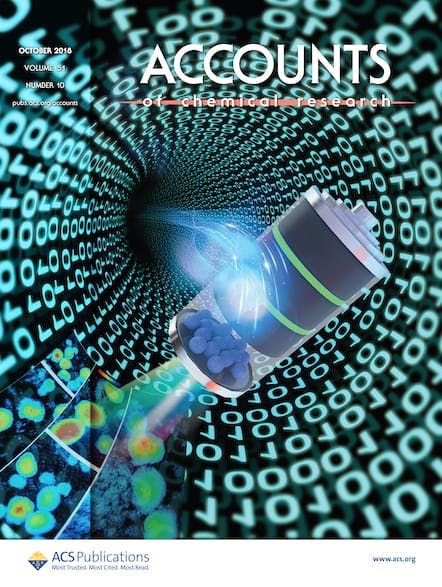
Read our latest issue. Want to contribute to this journal?
Suggestions or feedback?
MIT News | Massachusetts Institute of Technology
- Machine learning
- Social justice
- Black holes
- Classes and programs
Departments
- Aeronautics and Astronautics
- Brain and Cognitive Sciences
- Architecture
- Political Science
- Mechanical Engineering
Centers, Labs, & Programs
- Abdul Latif Jameel Poverty Action Lab (J-PAL)
- Picower Institute for Learning and Memory
- Lincoln Laboratory
- School of Architecture + Planning
- School of Engineering
- School of Humanities, Arts, and Social Sciences
- Sloan School of Management
- School of Science
- MIT Schwarzman College of Computing
Researchers detect a new molecule in space
Press contact :.
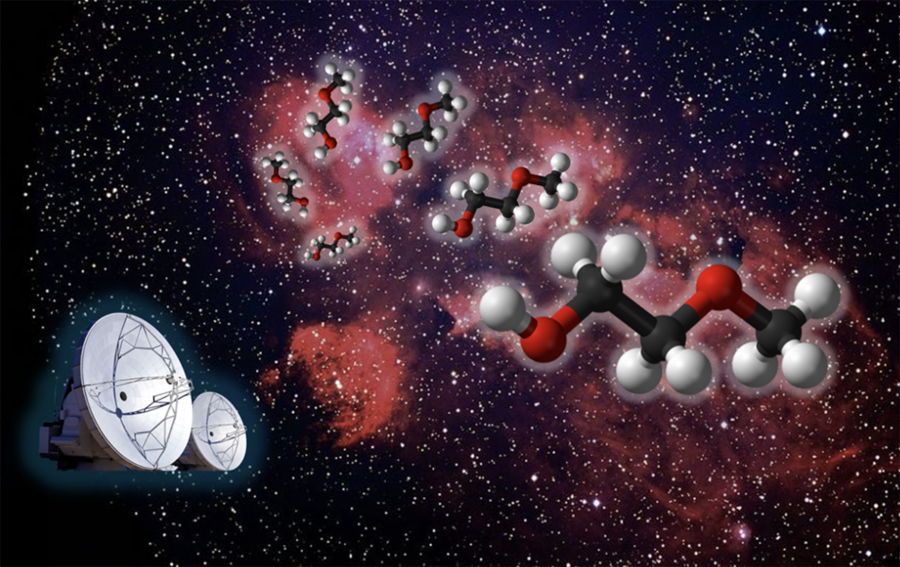
Previous image Next image
New research from the group of MIT Professor Brett McGuire has revealed the presence of a previously unknown molecule in space. The team's open-access paper, “ Rotational Spectrum and First Interstellar Detection of 2-Methoxyethanol Using ALMA Observations of NGC 6334I ,” appears in April 12 issue of The Astrophysical Journal Letters .
Zachary T.P. Fried , a graduate student in the McGuire group and the lead author of the publication, worked to assemble a puzzle comprised of pieces collected from across the globe, extending beyond MIT to France, Florida, Virginia, and Copenhagen, to achieve this exciting discovery.
“Our group tries to understand what molecules are present in regions of space where stars and solar systems will eventually take shape,” explains Fried. “This allows us to piece together how chemistry evolves alongside the process of star and planet formation. We do this by looking at the rotational spectra of molecules, the unique patterns of light they give off as they tumble end-over-end in space. These patterns are fingerprints (barcodes) for molecules. To detect new molecules in space, we first must have an idea of what molecule we want to look for, then we can record its spectrum in the lab here on Earth, and then finally we look for that spectrum in space using telescopes.”
Searching for molecules in space
The McGuire Group has recently begun to utilize machine learning to suggest good target molecules to search for. In 2023, one of these machine learning models suggested the researchers target a molecule known as 2-methoxyethanol.
“There are a number of 'methoxy' molecules in space, like dimethyl ether, methoxymethanol, ethyl methyl ether, and methyl formate, but 2-methoxyethanol would be the largest and most complex ever seen,” says Fried. To detect this molecule using radiotelescope observations, the group first needed to measure and analyze its rotational spectrum on Earth. The researchers combined experiments from the University of Lille (Lille, France), the New College of Florida (Sarasota, Florida), and the McGuire lab at MIT to measure this spectrum over a broadband region of frequencies ranging from the microwave to sub-millimeter wave regimes (approximately 8 to 500 gigahertz).
The data gleaned from these measurements permitted a search for the molecule using Atacama Large Millimeter/submillimeter Array (ALMA) observations toward two separate star-forming regions: NGC 6334I and IRAS 16293-2422B. Members of the McGuire group analyzed these telescope observations alongside researchers at the National Radio Astronomy Observatory (Charlottesville, Virginia) and the University of Copenhagen, Denmark.
“Ultimately, we observed 25 rotational lines of 2-methoxyethanol that lined up with the molecular signal observed toward NGC 6334I (the barcode matched!), thus resulting in a secure detection of 2-methoxyethanol in this source,” says Fried. “This allowed us to then derive physical parameters of the molecule toward NGC 6334I, such as its abundance and excitation temperature. It also enabled an investigation of the possible chemical formation pathways from known interstellar precursors.”
Looking forward
Molecular discoveries like this one help the researchers to better understand the development of molecular complexity in space during the star formation process. 2-methoxyethanol, which contains 13 atoms, is quite large for interstellar standards — as of 2021, only six species larger than 13 atoms were detected outside the solar system , many by McGuire’s group, and all of them existing as ringed structures.
“Continued observations of large molecules and subsequent derivations of their abundances allows us to advance our knowledge of how efficiently large molecules can form and by which specific reactions they may be produced,” says Fried. “Additionally, since we detected this molecule in NGC 6334I but not in IRAS 16293-2422B, we were presented with a unique opportunity to look into how the differing physical conditions of these two sources may be affecting the chemistry that can occur.”
Share this news article on:
Related links.
- McGuire Lab
- Department of Chemistry
Related Topics
- Space, astronomy and planetary science
- Astrophysics
Related Articles

Found in space: Complex carbon-based molecules
Previous item Next item
More MIT News

Geologists discover rocks with the oldest evidence yet of Earth’s magnetic field
Read full story →

Mapping the brain pathways of visual memorability
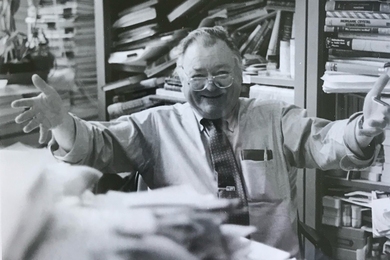
Professor Emeritus Bernhardt Wuensch, crystallographer and esteemed educator, dies at 90

How light can vaporize water without the need for heat

This tiny chip can safeguard user data while enabling efficient computing on a smartphone

“No one can work in civil engineering alone”
- More news on MIT News homepage →
Massachusetts Institute of Technology 77 Massachusetts Avenue, Cambridge, MA, USA
- Map (opens in new window)
- Events (opens in new window)
- People (opens in new window)
- Careers (opens in new window)
- Accessibility
- Social Media Hub
- MIT on Facebook
- MIT on YouTube
- MIT on Instagram
Thank you for visiting nature.com. You are using a browser version with limited support for CSS. To obtain the best experience, we recommend you use a more up to date browser (or turn off compatibility mode in Internet Explorer). In the meantime, to ensure continued support, we are displaying the site without styles and JavaScript.
- View all journals
- Explore content
- About the journal
- Publish with us
- Sign up for alerts
Collection 12 March 2020
Top 50 Chemistry and Materials Sciences Articles
We are pleased to share with you the 50 most read Nature Communications articles* in chemistry and materials sciences published in 2019. Featuring authors from around the world, these papers highlight valuable research from an international community.
Browse all Top 50 subject area collections here .
*Based on data from Google Analytics, covering January-December 2019 (data has been normalised to account for articles published later in the year)
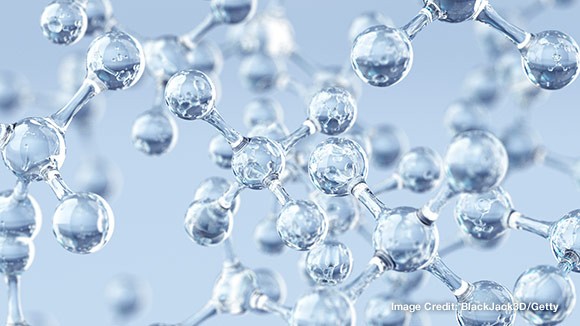
Overall electrochemical splitting of water at the heterogeneous interface of nickel and iron oxide
Ni–Fe based compound are known as active electrocatalysts for oxygen evolution reaction, but not a good choice for the other half-reaction of water-splitting. Here the authors report a unique interface between Ni and γ-Fe 2 O 3 that efficiently catalyzes the cathodic hydrogen evolution reaction.
- Bryan H. R. Suryanto
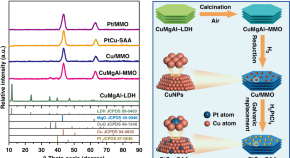
Platinum–copper single atom alloy catalysts with high performance towards glycerol hydrogenolysis
Selective hydrogenolysis of biomass glycerol to propanediol is a promising route for the production of high-value chemicals but remains a challenge. Here, the authors find a PtCu single atom alloy catalyst exhibits remarkably boosted performance with a turnover frequency value of 2.6 × 10 3 mol glycerol ·mol PtCu–SAA −1 ·h −1 .
- Guoqing Cui
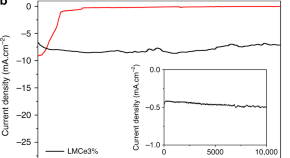
Room temperature CO 2 reduction to solid carbon species on liquid metals featuring atomically thin ceria interfaces
While CO 2 reduction proves an appealing means to convert greenhouse emissions to high-value products, there are few materials capable of such a conversion. Here, the authors demonstrate a liquid-metal electrocatalyst to convert CO 2 directly into solid carbon that can be used as capacitor electrodes.
- Dorna Esrafilzadeh
- Ali Zavabeti
- Kourosh Kalantar-Zadeh
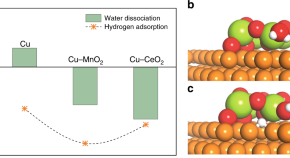
Hydroxide promotes carbon dioxide electroreduction to ethanol on copper via tuning of adsorbed hydrogen
Producing ethanol from carbon dioxide, water, and renewable electricity offers a route to sustainable energy. Here, the authors enhance electrocatalytic activity for carbon dioxide reduction by tuning adsorbed hydrogen in a class of copper catalysts with oxide- and hydroxide-modified surfaces.
- Mingchuan Luo
- Edward H. Sargent
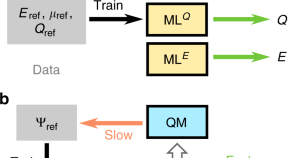
Unifying machine learning and quantum chemistry with a deep neural network for molecular wavefunctions
Machine learning models can accurately predict atomistic chemical properties but do not provide access to the molecular electronic structure. Here the authors use a deep learning approach to predict the quantum mechanical wavefunction at high efficiency from which other ground-state properties can be derived.
- K. T. Schütt
- M. Gastegger
- R. J. Maurer
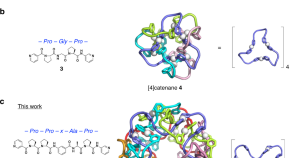
A metal–peptide capsule by multiple ring threading
Constructing molecular cages from entangled molecules is a complex task requiring precise topological control. Here, the authors thread together six metal-peptide rings into a giant cubic molecular capsule with a defined cavity and 24 crossover points.
- Tomohisa Sawada
- Yuuki Inomata
- Makoto Fujita
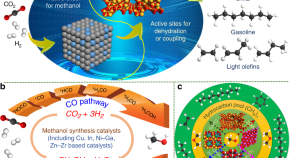
CO 2 hydrogenation to high-value products via heterogeneous catalysis
Carbon dioxide (CO 2 ) capture and conversion provide an alternative approach to synthesis of useful fuels and chemicals. Here, Ye et al. give a comprehensive perspective on the current state of the art and outlook of CO 2 catalytic hydrogenation to the synthesis of light olefins, dimethyl ether, liquid fuels, and alcohols.
- Run-Ping Ye
- Yuan-Gen Yao
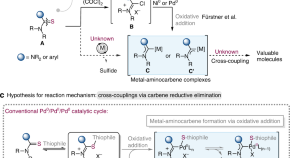
Palladium-catalyzed Suzuki-Miyaura coupling of thioureas or thioamides
Alternative carbene precursors for metal-catalyzed cross coupling may expand the portfolio of methods for C-C bond construction. Here, the authors report a Suzuki−Miyaura coupling of Pd−carbene complexes formed by desulfurization of thioureas or thioamides and affording a broad array of amidinium salts and diaryl ketones.
- Qiuling Song
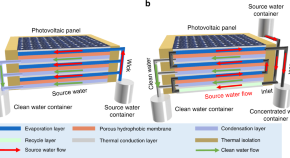
Simultaneous production of fresh water and electricity via multistage solar photovoltaic membrane distillation
The increasing demand for energy and clean water has become a grand global challenge. Here the authors develop a membrane-distillation device that exploits sunlight and the heat dissipated by an integrated solar cell unit, enabling simultaneous efficient production of electricity and drinkable water.
- Wenbin Wang
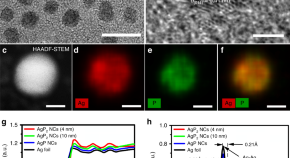
RETRACTED ARTICLE: Colloidal silver diphosphide (AgP 2 ) nanocrystals as low overpotential catalysts for CO 2 reduction to tunable syngas
Conversion of CO 2 into value-added chemicals by use of renewable energy is promising to achieve a carbon-neutral energy cycle. Here, the authors show that AgP 2 is a stable, selective and efficient syngas catalyst for solar-to-fuel conversion with a 3-fold lower overpotential compared to the benchmark Ag catalyst.
- Scott M. Geyer
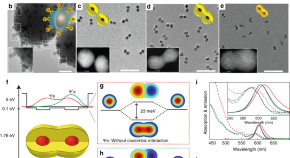
Colloidal quantum dot molecules manifesting quantum coupling at room temperature
In analogy to the coupling of atoms into molecules, the authors fuse colloidal semiconductor nanocrystals into quantum dot dimers. These nanocrystal ‘molecules’ exhibit significant quantum coupling effects, making them promising for applications in devices and potential quantum technologies.
- Yossef E. Panfil
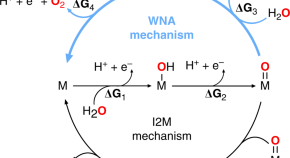
Universal scaling relations for the rational design of molecular water oxidation catalysts with near-zero overpotential
While water electrolysis affords hydrogen as a carbon-neutral fuel, the oxygen evolution half-reaction limits overall performances. Here, authors examine molecular catalysts and their water oxidation mechanisms via computational methods.
- Michael John Craig
- Gabriel Coulter
- Max García-Melchor

Plasmonic photosynthesis of C 1 –C 3 hydrocarbons from carbon dioxide assisted by an ionic liquid
While light-driven conversion of CO 2 and H 2 O directly into fuels affords an attractive means to store sunlight in chemical bonds, few systems produce high-value hydrocarbons. Here, authors show gold nanoparticles to reduce CO 2 to multi-carbon products using visible light, ionic liquids, and H 2 O.
- Prashant K. Jain
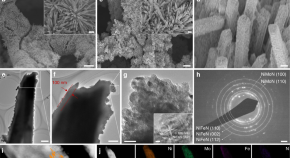

Non-noble metal-nitride based electrocatalysts for high-performance alkaline seawater electrolysis
Seawater electrolysis is a promising approach to produce hydrogen fuel and is also of great significance to seawater desalination. Here, the authors prepare 3D core-shell metal-nitride catalysts from earth-abundant elements for high-performance alkaline seawater electrolysis.
- Zhifeng Ren

The rapid electrochemical activation of MoTe 2 for the hydrogen evolution reaction
The performance of electrocatalysts for the renewable production of hydrogen is currently limited due to the difficulty of materials design. We show that tailoring the electronic structure under applied reductive bias is key to optimal electrocatalytic performance of a 2D chalcogenide material.
- Jessica C. McGlynn
- Torben Dankwort
- Alexey Y. Ganin
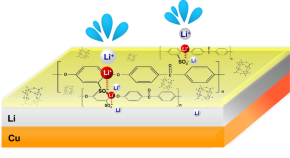
An ultrathin ionomer interphase for high efficiency lithium anode in carbonate based electrolyte
The authors here report an ultrathin ionomer membrane as an artificial solid-electrolyte interphase filter that minimizes parasitic reactions and enables stable dendrite-free lithium plating-stripping cycles in a carbonate-based electrolyte. The protected anodes exhibit outstanding coulombic efficiencies at room and elevated (50 °C) temperatures.
- Yu-Ting Weng
- Hao-Wen Liu
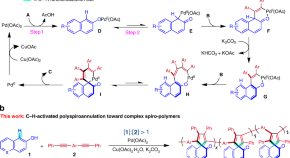
Photoresponsive spiro-polymers generated in situ by C–H-activated polyspiroannulation
Photoresponsive polymers are receiving great attention due to the increasing demands on smart optical and biological materials. Here, the authors report a C–H-activated polyspiroannulation route to in situ generate photoresponsive spiro-polymers with potential applications in photopatterning and silicon photonics techniques.
- Zhanshi Yao
- Ben Zhong Tang

Carbon dioxide capture and efficient fixation in a dynamic porous coordination polymer
Porous coordination polymers that possess structural flexibility show great promise for gas adsorption and catalysis. Here the authors synthesize a dynamic porous coordination polymer with rotating ligands that permit effective CO 2 trapping, and demonstrate subsequent CO 2 cycloaddition to epoxides.
- Susumu Kitagawa
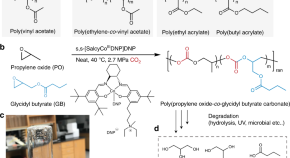
Sustainable polycarbonate adhesives for dry and aqueous conditions with thermoresponsive properties
Adhesives are ubiquitous in commodity products, however it it essential that their synthesis and degradation be sustainable without compromising their performance. Here, the authors report a library of adhesives based on environmentally benign building blocks that perform in both dry and wet environments.
- Anjeza Beharaj
- Ethan Z. McCaslin
- Mark W. Grinstaff
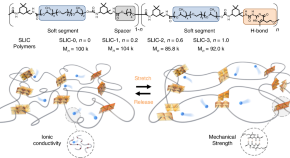
Decoupling of mechanical properties and ionic conductivity in supramolecular lithium ion conductors
Typically, ion conducting polymers exhibit a trade-off between mechanical robustness and ionic conducting performance. Here, the authors utilize supramolecular chemistry obtaining extremely tough electrolytes with high ionic conductivity and enabling stretchable lithium-ion batteries.
- David G. Mackanic
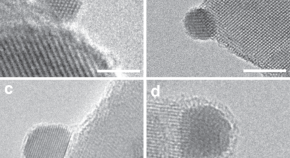
Ultrastable Au nanoparticles on titania through an encapsulation strategy under oxidative atmosphere
Sintering-resistant Au nanoparticles are highly desirable due to their low Tammann temperature. Here, the authors report an ultrastable titania-supported Au nanocatalyst through an encapsulation strategy under oxidative atmosphere.
- Shaofeng Liu
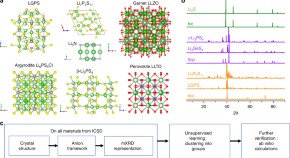
Unsupervised discovery of solid-state lithium ion conductors
Predictions of new solid-state Li-ion conductors are challenging due to the diverse chemistries and compositions involved. Here the authors combine unsupervised learning techniques and molecular dynamics simulations to discover new compounds with high Li-ion conductivity.
- Xingfeng He
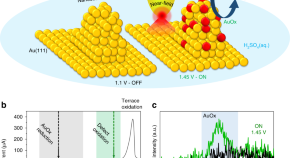
Reactivity mapping of nanoscale defect chemistry under electrochemical reaction conditions
Identifying reacting species locally with nanometer precision is a major challenge in electrochemical surface science. Using operando Raman nanoscopy, authors image the reversible, concurrent formation of nanometer-spatially separated Au 2 O 3 and Au 2 O species during Au nanodefect oxidation.
- Jonas H. K. Pfisterer
- Masoud Baghernejad
- Katrin F. Domke
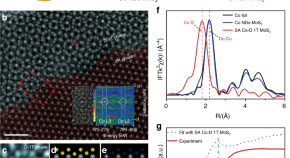
Single-atom cobalt array bound to distorted 1T MoS 2 with ensemble effect for hydrogen evolution catalysis
While single-atom catalysis offers an efficient materials usage, the ambiguous interactions with supports poses a difficulty in understanding catalytic performances. Here, authors show an ensemble effect via synergy of Co adatoms and the S of MoS 2 supports to boost hydrogen evolution activities.
- Xiaoqiang Cui
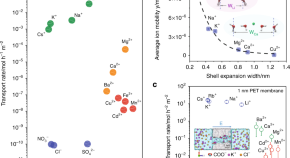
Design principles of ion selective nanostructured membranes for the extraction of lithium ions
Lithium is in increasing demand for energy storage and is abundant in seawater, but its extraction is challenging due to coexistence with similar ions. Here the authors review recent advances in lithium separation strategies, focusing on the development of nanochannel and nanopore based membranes.
- Amir Razmjou
- Mohsen Asadnia
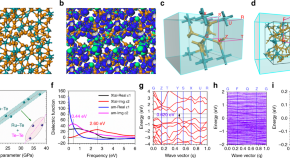
Amorphization activated ruthenium-tellurium nanorods for efficient water splitting
Elctrochemical water splitting is of vital significance for energy conversion and storage. Here the authors show an electrocatalyst based on amorphous ruthenium-tellurium porous nanorods which exhibit significantly improved OER performance than its crystalline counterparts
- Xiaoqing Huang
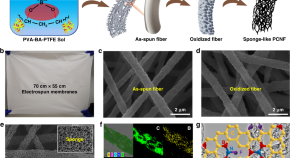
Multifunctional flexible membranes from sponge-like porous carbon nanofibers with high conductivity
Conductive porous carbons are promising for a variety of applications, but simultaneously tuning porosity and conductivity is challenging. Here, the authors develop a green method to fabricate flexible boron-nitrogen-fluorine triply doped carbon nanofibers with high porosity and conductivity.
- Jianhua Yan
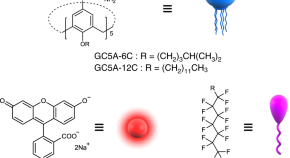
Guanidinocalix[5]arene for sensitive fluorescence detection and magnetic removal of perfluorinated pollutants
Design of materials which allow for simultaneous detection and removal of water pollutants is challenging. Here the authors develop a guanidinocalix[5]arene that selectively binds perfluorinated alkyl substances and allows for fluorescence detection as well as removal of the pollutants in contaminated water.
- Dong-Sheng Guo
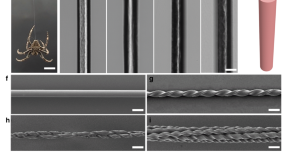
Artificial spider silk from ion-doped and twisted core-sheath hydrogel fibres
Different models are believed to be the reason for the superior mechanical properties of spider silk. Here, the authors prepare artificial spider silk by water-evaporation-induced self-assembly of a hydrogel fibre made from polyacrylic acid and silica nanoparticles.
- Yuanyuan Dou
- Zhen-Pei Wang
- Zunfeng Liu
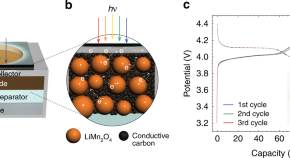
Photo-accelerated fast charging of lithium-ion batteries
Here the authors show that illumination of a lithium manganese oxide cathode can induce efficient charge-separation and electron transfer processes, thus giving rise to a new type of fast lithium-ion battery charging.
- Márton Vörös
- Christopher S. Johnson
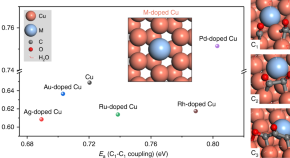
Efficient upgrading of CO to C 3 fuel using asymmetric C-C coupling active sites
Catalysts for CO electroreduction have focused on Cu, and their main products have been C 2 chemicals. Here authors use the concept of asymmetric active sites to develop a class of doped Cu catalysts for C-C coupling, delivering record selectivity to n -propanol.
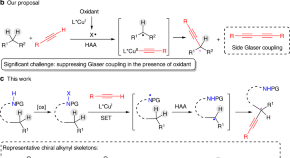
Copper-catalyzed enantioselective Sonogashira-type oxidative cross-coupling of unactivated C( sp 3 )−H bonds with alkynes
Enantioselective oxidative cross-coupling of unactivated C( sp 3 )−H bonds and terminal alkynes is challenging. Here, the authors developed a copper/cinchona alkaloid catalyst for the asymmetric Sonogashira-type alkynylation of C( sp 3 )-H bonds via radical intermediates.
- Zhen-Hua Zhang
- Xiao-Yang Dong
- Xin-Yuan Liu

Functionalized azetidines via visible light-enabled aza Paternò-Büchi reactions
The Aza Paternò-Büchi reaction is arguably among the most direct approaches to functionalized azetidines, which are common medicinal scaffolds. Here, the authors report a mild and selective visible light-enabled intramolecular aza Paternò-Büchi reaction yielding bicyclic azetidines in high yields and diastereoselectivity.
- Marc R. Becker
- Alistair D. Richardson
- Corinna S. Schindler
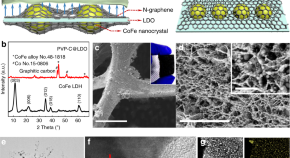
Multistaged discharge constructing heterostructure with enhanced solid-solution behavior for long-life lithium-oxygen batteries
Li–O 2 batteries suffer from poor charge transport in the insulating discharge products. Here the authors tackle the issue by pre-depositing a K 2 CO 3 layer and then using this to grow Li 2 O 2 film on top, enabling enhanced electronic conduction properties and improved overall performance.
- Jie-Sheng Chen
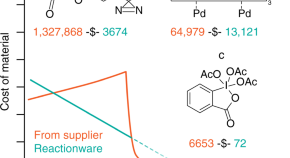
3D designed and printed chemical generators for on demand reagent synthesis
Synthetic labs rely on a vast number of chemicals, which are often unstable with time and affected by price fluctuations. Here, the authors report ad hoc developed cartridge reactionware for the synthesis of four different targets in a time- and cost-saving manner.
- Sergey S. Zalesskiy
- Philip J. Kitson
- Leroy Cronin
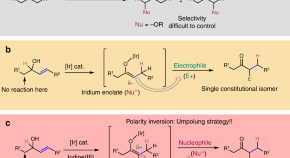
An umpolung strategy to react catalytic enols with nucleophiles
Nucleophiles cannot be directly reacted with enolates due to polarity mismatching. Here, the authors developed an umpolung strategy for the selective synthesis of α-alkoxy carbonyl compounds by reaction of iridium enolates with nucleophilic alcohols promoted by an iodine(III) reagent.
- Amparo Sanz-Marco
- Samuel Martinez-Erro
- Belén Martín-Matute
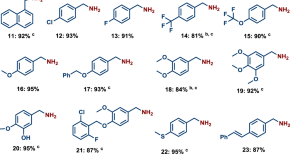
Homogeneous cobalt-catalyzed reductive amination for synthesis of functionalized primary amines
Despite their higher abundance, 3d metal-based catalysts are less investigated than their precious metal counterparts. Here, the authors report a cobalt-triphos complex as molecularly-defined non-noble metal catalyst for the reductive amination of carbonyl compounds with gaseous ammonia and hydrogen.
- Kathiravan Murugesan
- Zhihong Wei
- Rajenahally V. Jagadeesh
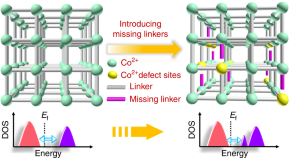
Missing-linker metal-organic frameworks for oxygen evolution reaction
While water splitting electrocatalysis provides a means to store electrical energy as fuel, the water oxidation catalysts typically show low performances. Here, authors employ metal-organic frameworks with missing-linkers as highly active oxygen evolution electrocatalysts.
- Guangqin Li
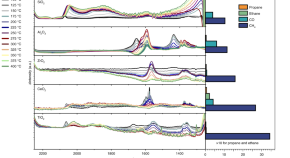
Understanding carbon dioxide activation and carbon–carbon coupling over nickel
Carbon dioxide is a desired feedstock for platform molecules, such as carbon monoxide and higher hydrocarbons, but needs improved catalysts. Here, the authors use a combined theoretical and experimental approach to tune the activity and selectivity of CO 2 conversion over nickel towards desired products.
- Charlotte Vogt
- Matteo Monai
- Bert M. Weckhuysen
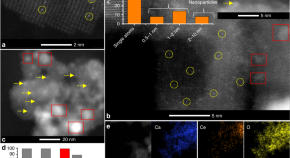
Atomically dispersed nickel as coke-resistant active sites for methane dry reforming
While dry reforming of methane, the reaction of CH 4 and CO 2 to create CO and H 2 , is a promising reaction for industry, coke buildup often deactivates catalysts and limits commercialization. Here, authors report single-atom nickel on Ce-doped hydroxyapatite as a coke-resistant catalyst.
- Mohcin Akri
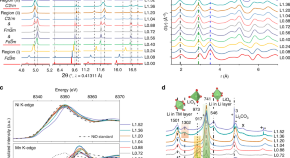
Structural insights into the formation and voltage degradation of lithium- and manganese-rich layered oxides
The authors here look into the phase transitions in Li-/Mn-rich layered cathode materials during synthesis and cycling. It is revealed that the Li-rich layered structure tends to transform to a Li-poor spinel phase via an intermediate Li-containing rock salt phase, with release of lithium/oxygen.
- Suning Wang
- Björn Schwarz
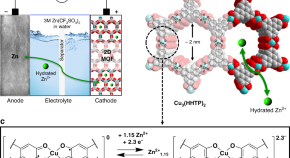
Conductive 2D metal-organic framework for high-performance cathodes in aqueous rechargeable zinc batteries
Aqueous zinc batteries are promising candidates for large scale energy storage systems but development of the cathode material remains a challenge. Here, the authors show a conductive 2D metal-organic framework involving intercalation pseudocapacitance mechanism for enhanced rate capability.
- Kwan Woo Nam
- Sarah S. Park
- J. Fraser Stoddart

A bio-inspired coordination polymer as outstanding water oxidation catalyst via second coordination sphere engineering
Proton-coupled electron transfer (PCET) process is very important for water oxidation catalysis. Here, the authors introduced uncoordinated carboxylate in the second-coordination-sphere of Ni-Fe coordination polymer catalyst as an internal base to promote the water oxidation kinetics by such PCET process.
- Licheng Sun
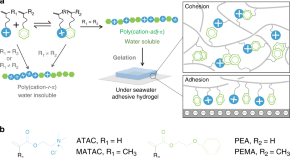
Adjacent cationic–aromatic sequences yield strong electrostatic adhesion of hydrogels in seawater
Specific sequences are essential for the development of cationic polymers that can adhere to negatively charged surfaces in saline environments. Here, the authors show that copolymers with adjacent cation–aromatic sequences can be synthesized through cation–π complex-aided free-radical polymerization, which exhibit fast, strong, but reversible adhesion.
- Hailong Fan
- Jiahui Wang
- Jian Ping Gong
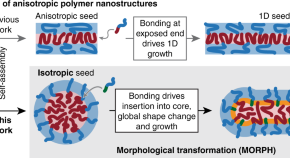
Anisotropic polymer nanoparticles with controlled dimensions from the morphological transformation of isotropic seeds
Understanding and controlling self-assembly processes at multiple length scales is essential to design and create advanced materials. Here the authors report a method for the production of highly anisotropic nanoparticles with controlled dimensions based on the morphological transformation of initially isotropic seeds, driven by supramolecular bonding.
- Joseph R. Jones
- Rachel K. O’Reilly
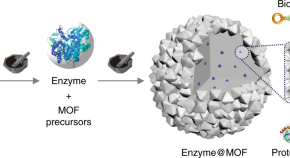
Rapid mechanochemical encapsulation of biocatalysts into robust metal–organic frameworks
Metal–organic frameworks (MOFs) are attractive for encapsulating enzymes for industrial purposes because they can increase selectivity, stability, and/or activity of the enzymes. Here, the authors developed an economical solid-state mechanochemical method to encapsulate enzymes during MOF synthesis.
- Shi-Hong Wu
- Fa-Kuen Shieh
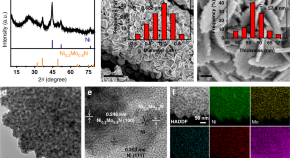
Nickel-molybdenum nitride nanoplate electrocatalysts for concurrent electrolytic hydrogen and formate productions
Hydrogen production by electrocatalytic water splitting is limited by the sluggish evolution kinetics of low value-oxygen. Here, authors show concurrent electrolytic productions of H 2 and glycerol oxidation to formate by utilizing Ni-Mo-N/CFC electro-catalyst as both anodic and cathodic catalysts.
- Mingyuan He
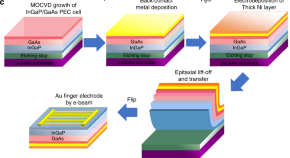
An efficient and stable photoelectrochemical system with 9% solar-to-hydrogen conversion efficiency via InGaP/GaAs double junction
Photoelectrochemical water-splitting devices with III-V semiconductors are efficient for solar-to-hydrogen conversion, but high costs and poor stability limit applications. Here, authors decouple light harvesting from electrolysis to enhance stability without compromising the efficiency.
- Purushothaman Varadhan
- Hui-Chun Fu
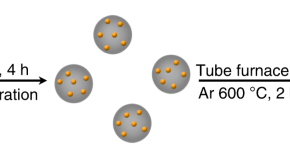
A universal ligand mediated method for large scale synthesis of transition metal single atom catalysts
Single-atom catalysts are a promising class of catalytic materials, but general synthetic methods are limited. Here, the authors develop a ligand-mediated strategy that allows the large-scale synthesis of diverse transition metal single atom catalysts supported on carbon.
- Hongzhou Yang
- Tierui Zhang
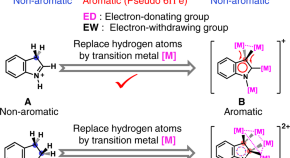
Hyperconjugative aromaticity and protodeauration reactivity of polyaurated indoliums
Hyperconjugative aromaticity combines the concepts of hyperconjugation and aromaticity and explains cyclopentadiene stability. Here, the authors demonstrate extended hyperconjugative aromaticity in a metallated indole ring, which shows extended electron conjugation due to the dual hyperconjugation.
Quick links
- Explore articles by subject
- Guide to authors
- Editorial policies
Your browser is not supported
Sorry but it looks as if your browser is out of date. To get the best experience using our site we recommend that you upgrade or switch browsers.
Find a solution
- Skip to main content
- Skip to navigation
- hot-topics Extras
- Newsletters
- Reading room
Tell us what you think. Take part in our reader survey
Celebrating twenty years
- Back to parent navigation item
- Collections
- Water and the environment
- Chemical bonding
- Antimicrobial resistance
- Energy storage and batteries
- AI and automation
- Sustainability
- Research culture
- Nobel prize
- Food science and cookery
- Plastics and polymers
- Periodic table
- Coronavirus

- More from navigation items

Conserving Barbie from degradation
By Rachel Brazil
Although she is a cultural icon, conserving Barbie has its challenges: as with most plastic toys and dolls, she was not made to last. Rachel Brazil investigates how conservation scientists are approaching this sticky problem
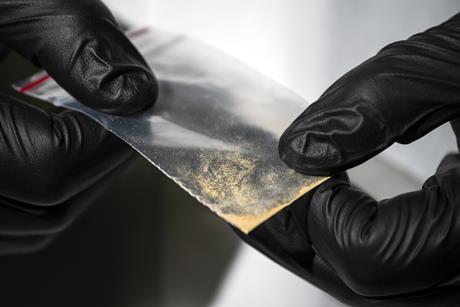
Explainer: nitazenes and xylazine – a cause for concern
By Julia Robinson
Why is the use of these highly potent synthetic drugs rising dramatically?

Canada pledges dramatic pay rise for PhDs, postdocs – but many will not benefit
By Rebecca Trager
Budget commits $825 million over five years to boost PhD stipends and postdoctoral fellowships, after over 20 years of stagnation

US National Academy of Sciences launches $8m fund to support Ukraine’s science community
2024-04-22T13:30:00+01:00
The fund draws on support from philanthropic organisations, including the Simons Foundation and the Chan Zuckerberg Foundation

New twist in saga means building used by Marie Curie will stay at original site
2024-04-19T09:43:00+01:00
Parisian site used to prepare and store radioactive materials was first set to be demolished, then moved and will now become part of a museum

New $132 million chemistry building opens at University of Maryland
2024-04-18T13:30:00+01:00
Facility will act as a focal point for quantum chemistry, molecular nanoscience and sustainability research

Oil and gas industry emissions are not on track to hit climate goals
2024-04-18T08:00:00+01:00
Several big firms have rolled back their targets, saying governments need to set pace with policy

‘It’s an efficient machine to destroy nuclear waste’: nuclear future powered by thorium beckons
2024-04-17T08:30:00+01:00
Thorium nuclear reactors could consume nuclear waste and provide power without the risk of nuclear weapon proliferation

E. coli engineered to become methanol addict to make industry feedstocks
2024-04-24T09:16:00+01:00
Bacterium could head off food versus fuel dilemma by producing chemicals from agricultural waste

Mystery of discrepancies in speed of sound in water cleared up by study of ions
2024-04-23T13:33:00+01:00
Anions and cations found to have wildly different effect on the speed of sound in solutions

Light-driven enzyme engineered and repurposed to catalyse unnatural reaction
2024-04-23T08:30:00+01:00
Directed evolution used to create photoenzyme that can perform new-to-nature radical cyclisation

Single atom layer of gold produced for the first time
2024-04-19T08:30:00+01:00
Goldene synthesised via etching technique used in Japanese knife-making

PFAS levels in the environment have been significantly underestimated
2024-04-16T13:30:00+01:00
20 years’ worth of environmental samples reveal up to 80% exceed drinking water standards
Sponsored content

Microsoft’s AI and high-performance computing system powers new battery discovery
Sponsored by Microsoft

Chemistry needs the human element - here’s why
Sponsored by JMP , By Phil Kay

A formula to calculate carbon
Sponsored by Together for Sustainability

Why the making stuff mindset doesn’t make sense

AstraZeneca strengthens academic collaborations for a sustainable future
Sponsored by AstraZeneca

Lab Innovations 2023 lays the path for smart and sustainable labs
Sponsored by Lab Innovations

CPHI Barcelona 2023: forging collaborations for a promising future in the pharmaceutical sector
Sponsored by CPHI
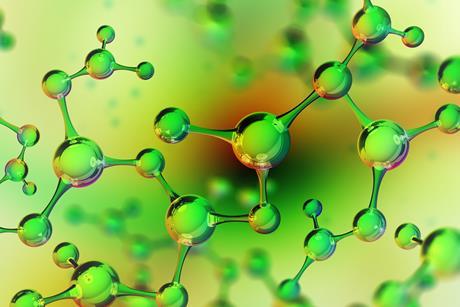
A three step strategy to make your research more sustainable
Sponsored by Elsevier , By Sarah Houlton
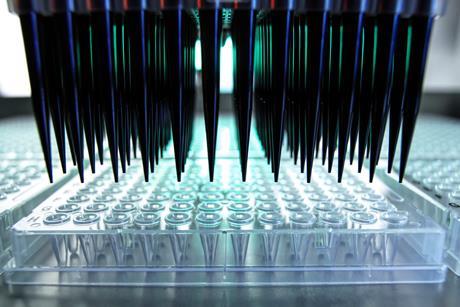
Digitalisation is the future of science, just ask a biologist
Voice of the royal society of chemistry.
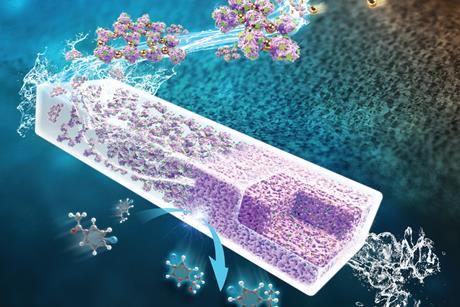
Biocatalysis – A cross-RSC collection
Voice of The Royal Society of Chemistry
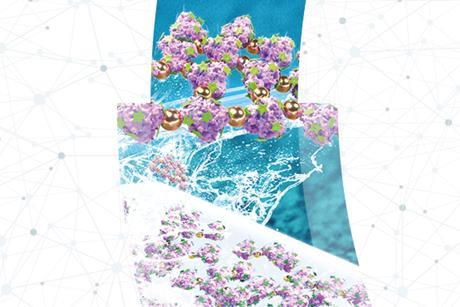
Biocatalysis Faraday Discussion

Myth busting: Chemists, the public and the media
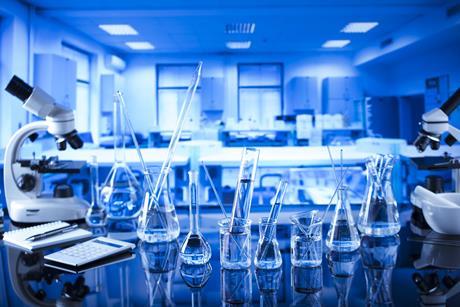
Innovating for the future of sustainable labs
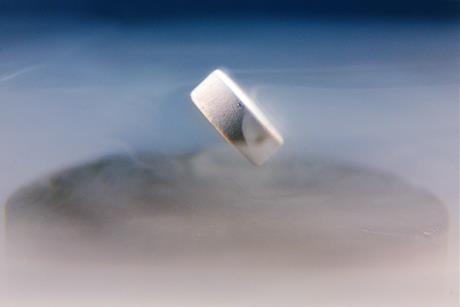
Superconductivity: the search and the scandal
By Kit Chapman
Recent high profile controversies haven’t deterred scientists from searching for one of research’s ultimate prizes: room temperature superconductors. Kit Chapman reports on the claims

The oceans’ climate challenge
By Nina Notman
Nina Notman speaks to the researchers unpicking the many ways the climate crisis is impacting our oceans – and vice versa

The chemists dedicated to making drinking water safer
Across the world, scientists use a variety of techniques to analyse and treat water to ensure it’s safe for us to drink. Julia Robinson talks to some of the people involved

Industry’s water sustainability crisis
By Angeli Mehta
As the chemical industry decarbonises, will it require more water? Angeli Mehta looks at whether there is enough to go round
Upcoming webinars

Investigating the behaviour of water at material interfaces

Clean water innovations: Addressing global challenges

Advances in Reaction Monitoring with FlowNMR
Sponsored by Oxford Instruments
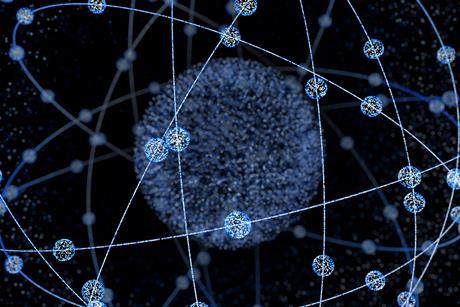
Lab XAS: A new tool for materials characterisation
Sponsored by easyXAFS

The pivotal role of chemistry in India’s sustainable development

Empowering voices: Advancing social mobility in the chemical sciences

Rail company will pay $600 million to settle East Palestine lawsuits

$6.6 million settlement follows 2019 fire at Texas petrochemical facility

Six dead in explosion and fire at Indian pharmaceutical plant
By Phillip Broadwith

3M finalises PFAS settlement with US water suppliers
Working life.
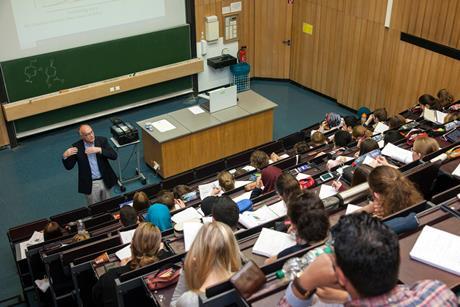
How to teach university-level chemistry well
By Dinsa Sachan
Five tips for educating and inspiring university students

Troubleshooting your career
By Emma Pewsey
Viewing your job through an experimental lens

How to troubleshoot experiments
By Victoria Atkinson
Six tips for solving problems in the lab
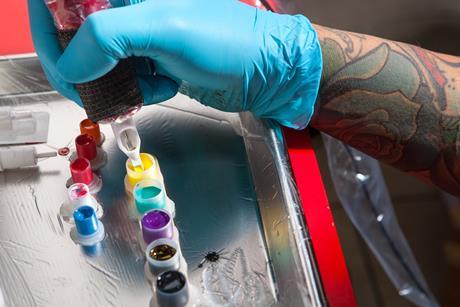
Using analytical chemistry to illuminate the unlisted ingredients in tattoo inks
Discovery that more than 80% of the tattoo inks sampled had unlisted ingredients prompts New York-based lab to launch a website providing chemical information to tattoo artists and their clients
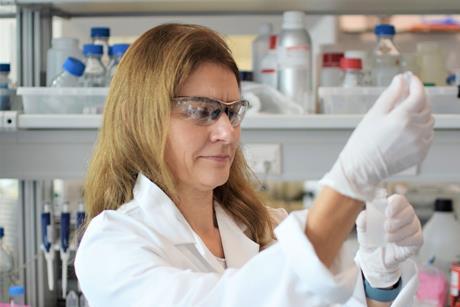
A sustainable career in sustainability
How Xampla’s principal scientist Lynette Holland became an industry leader without sacrificing her work-life balance

Jani Ingram: ‘We have seen wells with uranium levels higher than the drinking water standard’
The environmental chemist on addressing pollution of Navajo waterways from legacy mining, her life off the reservation and a puke green Datsun

Bin Liu: ‘Breakthroughs always need patience’
The materials expert on deciding to become a scientist, collaboration and fishing
From our columnists

Making sense of the maths
By Philip Ball
Manipulating equations isn’t the same as understanding science
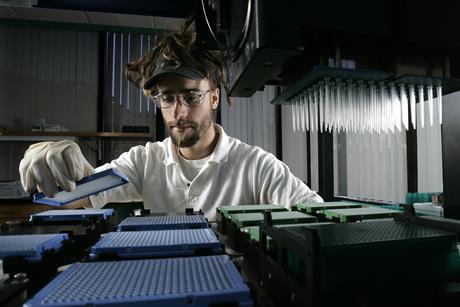
Inertia, decisions and robots
By Nessa Carson
Our cognitive biases can make it difficult to choose what’s best for science
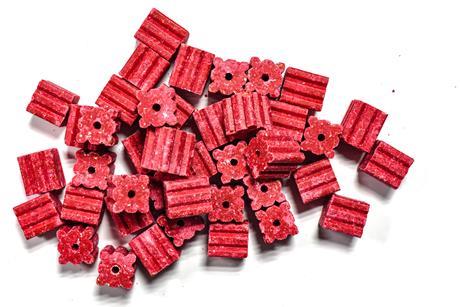
When the blood keeps on flowing
By Raychelle Burks
While warfarins can be lifesaving, superwarfarins are deadly – and not just to rodents
White papers
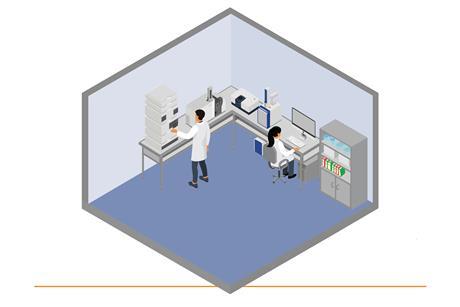
From R&D to QC, making NMR accessible for everyone
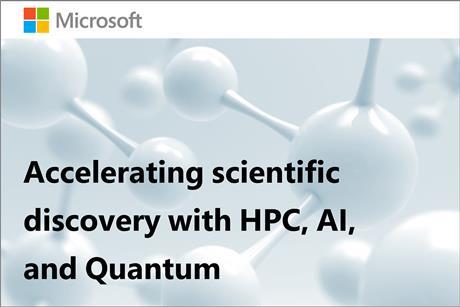
Accelerating scientific discovery with cutting-edge computing

Infographic: Maximise your lab productivity in real-time
Sponsored by Waters Corporation
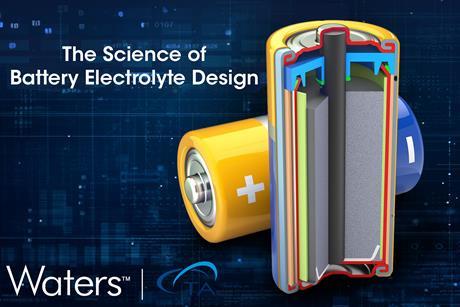
The science of battery electrolyte design

Are you seeing background contamination ions in your mass spectrometry data?
Sponsored by Thermo Fisher Scientific

Prepare tailor-made amino acids using chiral ligands and Ni(II) complexes
Sponsored by Oakwood Chemical
Listen to our podcasts
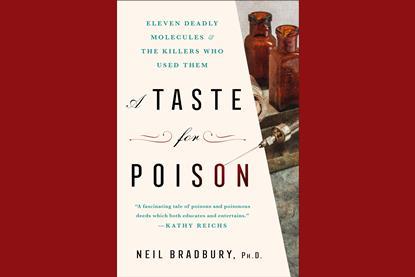
Book Club - A Taste for Poison
By Monserrat Garduño-Castro , Rebecca Trager and Frances Addison
Learning about chemistry through poisons and murders

Book club – Fresh Banana Leaves by Jessica Hernandez
By Nikki Man , Katrina Krämer and Enna Guadalupe
An Indigenous vision for environmental science

Book club – Racing Green
By Don Carpenetti , Rebecca Trager and Jennifer Newton
Motorsports are saving the world
- Contributors
- Terms of use
- Accessibility
- Permissions
- This website collects cookies to deliver a better user experience. See how this site uses cookies .
- This website collects cookies to deliver a better user experience. Do not sell my personal data .
- Este site coleta cookies para oferecer uma melhor experiência ao usuário. Veja como este site usa cookies .
Site powered by Webvision Cloud
It’s a wonderful world — and universe — out there.
Come explore with us!
Science News Explores

Air pollution can make it harder for pollinators to find flowers
Pollutants that build up in night air can break down the scents that attract pollinating hawkmoths to primrose blooms, disrupting their pollination.

Turning jeans blue with sunlight might help the environment

At last: How poison dart frogs ship defense toxins to their skin
Educators and parents, sign up for the cheat sheet.
Weekly updates to help you use Science News Explores in the learning environment
Thank you for signing up!
There was a problem signing you up.
More Stories in Chemistry

Let’s learn about graphene
Scientists have been trying to understand and harness this material’s superpowers since its discovery in 2004.

Chemists make device to destroy planet-warming methane pollution
It can slash diffuse sources of this extremely potent greenhouse gas, such as from livestock barns and other sites.

Analyze This: Stonehenge’s ‘Altar Stone’ has mysterious origins
After a century of searching for the source of the Altar Stone, scientists have yet to figure out where ancient people got the rock.

Scientists Say: Calorie
These little units help us measure energy transfer in chemistry, nutrition and beyond.

Pollution power? A new device turns carbon dioxide into fuel
Scientists made a device that converts the greenhouse gas into formate. This salt can then run a fuel cell to make electricity.

New ultrathin materials can pull climate-warming CO 2 from the air
To slow global warming, we’ll need help from CO2-trapping materials. Enter MXenes. They’re strong and reactive — and they love to eat up CO2.

Particles from tree waste could prevent fogged lenses, windshields
A new coating made from a renewable resource — water-loving nanoparticles made from wood — could keep glass surfaces fog-free.
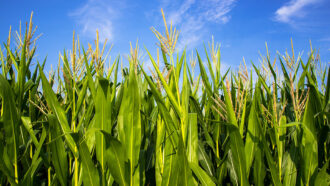
Young corn leaves can ‘smell’ danger
As they mature, these leaves lose their ability to detect threatening scents.

Hydrogen energy could help our climate — depending on its source
Hydrogen energy doesn’t emit greenhouse gases when it’s used. But how it’s produced will affect how useful it can be in slowing climate change.
100+ Great Chemistry Research Topics
Table of contents
- 1 What are the best chemistry research topics?
- 2 5 Tips for Writing Chemistry Research Papers
- 3 Chemical Engineering Research Topics
- 4 Organic Сhemistry Research Topics
- 5 Іnorganic Сhemistry Research Topics
- 6 Biomolecular Сhemistry Research Topics
- 7 Analytical Chemistry Research Topics
- 8 Computational Chemistry Research Topics
- 9 Physical Chemistry Research Topics
- 10 Innovative Chemistry Research Topics
- 11 Environmental Chemistry Research Topics
- 12 Green Chemistry Research Topics
- 13.1 Conclusion
Do you need a topic for your chemistry research paper? Are you unsure of where to start? Don’t worry – we’re here to help. In this post, we’ll go over a series of the best chemistry research paper topics as well as Tips for Writing Chemistry Research Papers on different topics. By the time you finish reading this post, you’ll have plenty of ideas to get started on your next research project!
There are many different subfields of chemistry, so it can be tough to find interesting chemistry topics to write about. If you’re struggling to narrow down your topic, we’ll go over lists of topics in multiple fields of study.
What are the best chemistry research topics?
Doing research is important to help scientists learn more about the world around us. By researching different compounds and elements, we can learn more about how they interact with one another and how they can be used to create new products or improve existing ones.
There are many different topics that you can choose to research in chemistry. Here are just a few examples:
- The history of chemistry and how it has evolved over time
- How different chemicals react with one another
- How to create new compounds or improve existing ones
- The role of chemistry in the environment
- The health effects of different chemicals
5 Tips for Writing Chemistry Research Papers
Once you have chosen a topic for your research paper , it is important to follow some tips to ensure that your paper is well-written and accurate. Here are a few tips to get you started:
- Start by doing some background research on your topic. This will help you understand the basics of the topic and give you a good foundation to build your paper on.
- Make sure to cite all of the sources that you use in your paper. This will help to show where you got your information and will also help to add credibility to your work.
- Be sure to proofread your paper before you submit it. This will ensure that there are no errors and that your paper is clear and concise.
- Get help from a tutor or friend if you are struggling with your paper. They may be able to offer helpful advice or feedback.
- Take your time when writing your research paper . This is not a race, and it is important to make sure that you do a good job on your research.
By following these tips, you can be sure that your chemistry research paper will be a success! So what are you waiting for? Let’s go over some of the best research paper topics out there.
Chemical Engineering Research Topics
Chemical Engineering is a branch of engineering that deals with the design and application of chemical processes. If you’re wondering how to choose a paper topic, here are some ideas to inspire you:
- How to create new alloy compounds or improve existing ones
- The health effects of the food industry chemicals
- Chemical engineering and sustainable development
- The future of chemical engineering
- Chemical engineering and the food industry
- Chemical engineering and the pharmaceutical industry
- Chemical engineering and the cosmetics industry
- Chemical engineering and the petrochemical industry
These are just a few examples – there are many more possibilities out there! So get started on your research today. Who knows what you might discover!

Organic Сhemistry Research Topics
Organic chemistry is the study of carbon-containing molecules. There are many different organic chemistry research topics that a student could choose to focus on and here are just a few examples of possible research projects in organic chemistry:
- Investigating new methods for synthesizing chiral molecules
- Studying the structure and reactivity of carbon nanotubes
- Investigating metal complexes with organometallic ligands
- Designing benzene derivatives with improved thermal stability
- Exploring new ways to control the stereochemistry of chemical reactions
- Studying the role of enzymes in organic synthesis
- Investigating new strategies for combating drug resistance
- Developing new methods for detecting explosives residues
- Studying the photochemistry of organic molecules
- Studying the behavior of organometallic compounds in biological systems
Іnorganic Сhemistry Research Topics
Inorganic Chemistry is the study of the chemistry of materials that do not contain carbon. Unlike other chemistry research topics, these include elements such as metals, minerals, and inorganic compounds. If you are looking for inorganic chemistry research topics on inorganic chemistry, here are some ideas to get you started:
- How different metals react with one another
- How to create new alloys or improve existing ones
- The role of inorganic chemistry in the environment
- Inorganic chemistry and sustainable development
- The future of inorganic chemistry
- Inorganic chemistry and the food industry
- Inorganic chemistry and the pharmaceutical industry
- Atomic structure progressive scale grading
- Inorganiс Сhemistry and the cosmetics industry
Biomolecular Сhemistry Research Topics
Biomolecular chemistry is the study of molecules that are important for life. These molecules can be found in all living things, from tiny bacteria to the largest animals. Researchers who work in this field use a variety of techniques to learn more about how these molecules function and how they interact with each other.
If you are looking for essential biomolecular chemistry research topics, here are some ideas to get you started:
- The structure and function of DNA
- The structure and function of proteins
- The role of carbohydrates in the body
- The role of lipids in the body
- How enzymes work
- The role of biochemistry in heart disease
- Cyanides and their effect on the body
- The role of biochemistry in cancer treatment
- The role of biochemistry in Parkison’s disease treatment
- The role of biochemistry in the immune system
The possibilities are endless for someone willing to dedicate some time to research.
Analytical Chemistry Research Topics
Analytical Chemistry is a type of chemistry that helps scientists figure out what something is made of. This can be done through a variety of methods, such as spectroscopy or chromatography. If you are looking for research topics, here are some ideas to get you started:
- How food chemicals react with one another
- Mass spectrometry
- Analytical aspects of gas and liquid chromatography
- Analytical chemistry and sustainable development
- Atomic absorption spectroscopy methods and best practices
- Analytical chemistry and the pharmaceutical industry in Ibuprofen consumption
- Analytical chemistry and the cosmetics industry in UV protectors
- Dispersive x-ray analysis of damaged tissues
Analytical chemistry is considered by many a complex science and there is a lot yet to be discovered in the field.

Computational Chemistry Research Topics
Computational chemistry is a way to use computers to help chemists understand chemical reactions. This can be done by simulating reactions or by designing new molecules. If you are looking for essential chemistry research topics in computational chemistry, here are some ideas to get you started:
- Molecular mechanics simulation
- Reaction rates of complex chemical reactions
- Designing new molecules: how can simulation help
- The role of computers in the study of quantum mechanics
- How to use computers to predict chemical reactions
- Using computers to understand organic chemistry
- The future of computational chemistry in organic reactions
- The impacts of simulation on the development of new medications
- Combustion reaction simulation impact on engine development
- Quantum-chemistry simulation review
Computers are cutting-edge technology in chemical research and this relatively new field of study has a ton yet to be explored.
Physical Chemistry Research Topics
Physical chemistry is the study of how matter behaves. It looks at the physical and chemical properties of atoms and molecules and how they interact with each other. If you are looking for physical chemistry research topics, here are some ideas to get you started:
- Standardization of pH scales
- Structure of atom on a quantum scale
- Bonding across atoms and molecules
- The effect of temperature on chemical reactions
- The role of light in in-body chemical reactions
- Chemical kinetics
- Surface tension and its effects on mixtures
- The role of pressure in chemical reactions
- Rates of diffusion in gases and liquids
- The role of entropy in chemical reactions
Here are just a few samples, but there are plenty more options! Start your research right now!
Innovative Chemistry Research Topics
Innovative chemistry is all about coming up with new ideas and ways to do things. This can be anything from creating new materials to finding new ways to make existing products. If you are looking for ground-breaking chemistry research topics, here are some ideas to get you started:
- Amino acids side chain effects in protein folding
- Chemistry in the production of nanomaterials
- The role of enzymes in chemical reactions
- Photocatalysis in 3D printing
- Avoiding pesticides in agriculture
- Combining chemical and biological processes
- Gene modification in medicinal chemistry
- The role of quantum mechanics in chemical reactions
- Astrochemical research on extraterrestrial molecules
- Spectroscopy signatures of pressurized organic components
If you need a hand, there are several sites that also offer research papers for sale and can be a great asset as you work to create your own research papers.
Whatever route you decide to take, good luck! And remember – the sky’s the limit when it comes to research! So get started today and see where your studies may take you. Who knows, you might just make a breakthrough discovery!
Environmental Chemistry Research Topics
Environmental Chemistry is the study of how chemicals interact with the environment. This can include anything from the air we breathe to the water we drink. If you are looking for environmental chemistry research topics, here are some ideas to get you started:
- Plastic effects on ocean life
- Urban ecology
- The role of carbon in climate change
- Air pollution and its effects
- Water pollution and its effects
- Chemicals in food and their effect on the body
- The effect of chemicals on plant life
- Earth temperature prediction models
A lot of research on the environment is being conducted at the moment because the environment is in danger. There are a lot of environmental problems that need to be solved, and research is the key to solving them.
Green Chemistry Research Topics
Green chemistry is the study of how to make products and processes that are environmentally friendly. This can include anything from finding new ways to recycle materials to developing new products that are biodegradable. If you are looking for green chemistry research topics, here are some ideas to get you started:
- Recycling and reuse of materials
- Developing biodegradable materials
- Improving existing recycling processes
- Green chemistry and sustainable development
- The future of green chemistry
- Green chemistry and the food industry
- Green chemistry and the pharmaceutical industry
- Green chemistry and the cosmetics industry
A more environmentally friendly world is something we all aspire for and a lot of research has been conducted on how we can achieve this, making this one of the most promising areas of study. The results have been varied, but there are a few key things we can do to make a difference.
Controversial Chemistry Research Topics
Controversial chemistry is all about hot-button topics that people are passionate about. This can include anything from the use of chemicals in warfare to the health effects of different chemicals. If you are looking for controversial topics to write about , here are some ideas to get you started:
- The use of chemicals in warfare
- Gene modification in human babies
- Bioengineering
- How fast food chemicals affect the human brain
- The role of the government in regulating chemicals
- Evolution of cigarette chemicals over time
- Chemical effects of CBD oils
- Antidepressant chemical reactions
- Synthetic molecules replication methods
- Gene analysis
Controversial research papers often appear in the media before it has been peer-reviewed and published in a scientific journal. The reason for this is that the media is interested in stories that are new, exciting, and generate a lot of debate.
Chemistry is an incredibly diverse and interesting field, with many controversial topics to write about. If you are looking for a research topic, consider the examples listed in this article. With a little bit of effort, you are sure to find a topic that is both interesting and within your skillset.
In order to be a good researcher, it is important to be able to think critically and solve problems. However, innovation in chemistry research can be challenging. When thinking about how to innovate, it is important to consider both the practical and theoretical aspects of your research. Additionally, try to build on the work of others in order to create something new and unique. With a little bit of effort, you are sure to be able to find a topic that is both interesting and within your skillset.
Happy writing!
Readers also enjoyed

WHY WAIT? PLACE AN ORDER RIGHT NOW!
Just fill out the form, press the button, and have no worries!
We use cookies to give you the best experience possible. By continuing we’ll assume you board with our cookie policy.
PERSPECTIVE article
This article is part of the research topic.
Organic Chemistry Education Research into Practice
Bridging Chemistry Education Research and Practice through Research-Practice Partnerships Provisionally Accepted

- 1 University of North Carolina at Greensboro, United States
The final, formatted version of the article will be published soon.
This perspective article is a call to establish research-practice partnerships (RPPs) to foster collaborations between instructors and education researchers to tune into the needs of practice, share evidence-based practices, and solve modern organic chemistry education problems. I begin the article by discussing some limitations of the traditional approach of "translating" research into practice and suggest RPPs as an alternative model for "bridging" research and practice. Importantly, RPPs have been shown to address persistent problems of practice and improve educational outcomes. While more common at the secondary level, RPPs are rarely leveraged in post-secondary chemistry education. The article goes on to provide a concrete and relevant context for potential future RPP efforts to improve aspects of organic chemistry education-RPPs between education researchers and organic chemistry instructors to work toward designing, administering, and testing interventions to support learners' representational competence (RC). RC is a set of skills that allow for the reflective use of a variety of representations to think about, communicate, and act on chemical phenomena. Current instruction often falls short of effectively supporting learners in developing RC. It is often tacitly assumed that learners will develop RC without explicit instruction that scaffolds the development of the RC skills. While it is important to improve the teaching about and with representations, implementing innovative pedagogical approaches can be challenging, particularly when instructors feel isolated in their efforts within their work environments. The RPP model could catalyze solutions to these challenges by pooling diverse expertise, thus enabling more robust and sustainable educational innovations.
Keywords: Post-secondary education, Organic Chemistry, Representational competence, Professional Development, Research-practice partnerships
Received: 16 Mar 2024; Accepted: 23 Apr 2024.
Copyright: © 2024 Popova. This is an open-access article distributed under the terms of the Creative Commons Attribution License (CC BY) . The use, distribution or reproduction in other forums is permitted, provided the original author(s) or licensor are credited and that the original publication in this journal is cited, in accordance with accepted academic practice. No use, distribution or reproduction is permitted which does not comply with these terms.
* Correspondence: Dr. Maia Popova, University of North Carolina at Greensboro, Greensboro, United States
People also looked at
Maintenance work is planned for Wednesday 1st May 2024 from 9:00am to 11:00am (BST).
During this time, the performance of our website may be affected - searches may run slowly and some pages may be temporarily unavailable. If this happens, please try refreshing your web browser or try waiting two to three minutes before trying again.
We apologise for any inconvenience this might cause and thank you for your patience.

Chemistry Education Research and Practice
The development of pre-service teachers’ argumentation self-efficacy through argumentation-based chemistry instruction.
This research aimed to examine the impact of argumentation-based chemistry instruction on the argumentation self-efficacy of pre-service teachers' (PSTs’) and their perceptions regarding the effectiveness of this instruction on their argumentation self-efficacy. This exploratory study involved a cohort of PSTs who actively participated in a series of argumentation-based chemistry activities facilitated by their classroom teacher over an 11-week period, with each activity spanning 1 or 2 weeks. The introduction of argumentation preceded the exploration of chemistry topics, including heat and temperature, gas laws, physical and chemical change, solubility, distinctive properties of matter, chemical reactions, and acids-bases. Data sources comprised the Self-Efficacy Scale for Argumentation, the Evaluation of Instruction for Enhancing Self-Efficacy Survey, and semi-structured interviews. The findings revealed an increase in PSTs' self-efficacy for argumentation after 11 weeks of argumentation-based chemistry instruction. These results suggest that PSTs can significantly enhance their self-efficacy for argumentation when provided with instruction tailored to incorporate argumentation principles.
Article information
Download citation, permissions.
P. S. ÇETİN, G. EYMUR and S. ERENLER, Chem. Educ. Res. Pract. , 2024, Accepted Manuscript , DOI: 10.1039/D3RP00337J
To request permission to reproduce material from this article, please go to the Copyright Clearance Center request page .
If you are an author contributing to an RSC publication, you do not need to request permission provided correct acknowledgement is given.
If you are the author of this article, you do not need to request permission to reproduce figures and diagrams provided correct acknowledgement is given. If you want to reproduce the whole article in a third-party publication (excluding your thesis/dissertation for which permission is not required) please go to the Copyright Clearance Center request page .
Read more about how to correctly acknowledge RSC content .
Social activity
Search articles by author.
This article has not yet been cited.
Advertisements

IMAGES
VIDEO
COMMENTS
Browse the 25 most downloaded Nature Communications articles in chemistry and materials sciences published in 2021. ... these papers highlight valuable research from an international community.
How a sugar acid crucial for life could have formed in interstellar clouds. Computer calculations and lab experiments have revealed a possible mechanism for the creation of glyceric acid, which ...
SciTechDaily features the latest chemistry news and recent research articles from leading universities and institutes from around the world. Here, we delve into the ever-evolving realm of molecules, elements, and reactions, bringing you up-to-date insights from renowned scientists and researchers. Read interesting chemistry news and ...
Chemistry news. Read chemistry articles from research institutes around the world -- organic and inorganic chemistry -- including new techniques and inventions.
ACS Publications regularly produces collections of the most important chemistry research topics. These Virtual Collections of the most important chemistry research topics bring together the most important ideas in the field in a variety of ways, including Special Issues and ACS Selects from across the portfolio journals. These collections reflect the most important chemistry research […]
Superconductor Research Is in a 'Golden Age,' Despite Controversy. November 17, 2023 — Davide Castelvecchi and Nature magazine. Public Health. Hair Straighteners and Relaxers May Be Harmful ...
ACS Publications provides the most interesting, reliable, and relevant scientific content in the world. Students, faculty, staff, and scientists can find the information they need to spark their next influential research article, product, or discovery.
Browse Chemistry news, research and analysis from The Conversation Menu Close ... Articles on Chemistry. Displaying 1 - 20 of 348 articles. ESO/A. Watts et al. April 22, 2024
Life's vital chemistry may have begun in hot, cracked rock. Amino acids and other molecules important to the origin of life can be enriched within networks of rocky fractures, which would have ...
The 20 Most Read Chemistry Articles of 2022. Meredith Rountree. Jan 13, 2023. 4 min read. We invite you to explore the 20 most read chemistry articles in 2022 across all ACS Publications journals. There are many ways to measure an article's success after it is published. One helpful method of evaluating a scientific publication's reach and ...
One way to consider the influence of an article is just by looking at how many people chose to read it. To that end, we've compiled lists of the five most-read chemistry articles that were published in each ACS Publications journal during 2021, including papers, reviews, perspectives, and editorial pieces. These lists were not chosen by the ...
New research from the group of MIT Professor Brett McGuire has revealed the presence of a previously unknown molecule in space. The team's open-access paper, "Rotational Spectrum and First Interstellar Detection of 2-Methoxyethanol Using ALMA Observations of NGC 6334I," appears in April 12 issue of The Astrophysical Journal Letters. Zachary T.P. Fried, a graduate student in the McGuire ...
Browse the 50 most read chemistry and materials sciences articles published in Nature Communications in 2019. ... these papers highlight valuable research from an international community.
Bioinformatic clustering of the sequences combined with high throughput synthesis and analysis methods allow efficient prioritisation of hits for in vivo experiments. From the themed collection: Most popular 2022 organic chemistry articles. The article was first published on 24 Feb 2022. Chem. Sci., 2022,13, 3256-3262.
Wajid Ali, Gaurav Prakash and Debabrata Maiti. Transition metal-catalysed functionalizations of inert C-H bonds to construct C-C bonds represent an ideal route in the synthesis of valuable organic molecules. From the themed collection: Most popular 2021 organic chemistry articles, 2021. The article was first published on 29 Jan 2021Chem.
New $132 million chemistry building opens at University of Maryland. 2024-04-18T13:30:00+01:00. Facility will act as a focal point for quantum chemistry, molecular nanoscience and sustainability ...
Hydrogen energy and storage are gaining significant attention due to their potential to address various energy and environmental challenges. Storage of hydrogen in a solid-state media is an area of significant interest and research in comparison to compressed gas or liquefied hydrogen storage in high-pressur Journal of Materials Chemistry A Recent Review Articles
Advances in New Tools of Electrochemistry for the Bioanalysis. Advances our understanding of how atoms, ions, and molecules come together and come apart. It explores the role of chemistry in our everyday lives - from electronic devices to health and wellbeing.
Founded in 2003, Science News Explores is a free, award-winning online publication dedicated to providing age-appropriate science news to learners, parents and educators. The publication, as well as Science News magazine, are published by the Society for Science, a nonprofit 501(c)(3) membership organization dedicated to public engagement in scientific research and education.
5 Іnorganic Сhemistry Research Topics. 6 Biomolecular Сhemistry Research Topics. 7 Analytical Chemistry Research Topics. 8 Computational Chemistry Research Topics. 9 Physical Chemistry Research Topics. 10 Innovative Chemistry Research Topics. 11 Environmental Chemistry Research Topics. 12 Green Chemistry Research Topics.
Laser-induced graphene (LIG) is a 3D porous material formed through a scalable, patternable, single-step, and cost-effective laser manufacturing technique, using a CO2 laser on carbon-rich materials in an ambient atmosphere. Since its discovery, LIG has gained significant research attention, elucidating its mechani Journal of Materials Chemistry C Recent Review Articles
This perspective article is a call to establish research-practice partnerships (RPPs) to foster collaborations between instructors and education researchers to tune into the needs of practice, share evidence-based practices, and solve modern organic chemistry education problems. I begin the article by discussing some limitations of the traditional approach of "translating" research into ...
This research aimed to examine the impact of argumentation-based chemistry instruction on the argumentation self-efficacy of pre-service teachers' (PSTs') and their perceptions regarding the effectiveness of this instruction on their argumentation self-efficacy. This exploratory study involved a cohort of PS